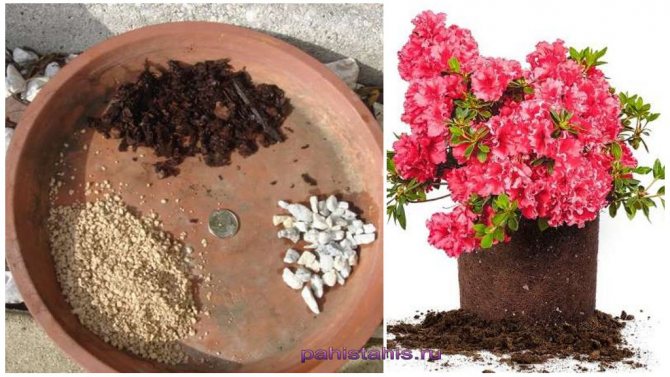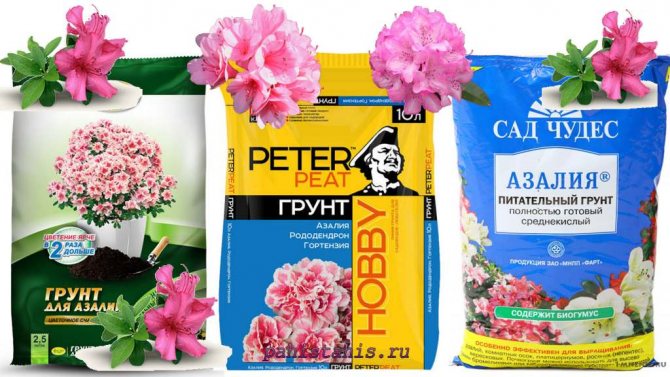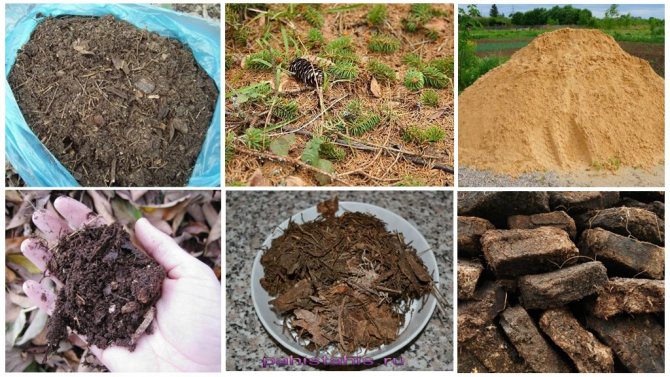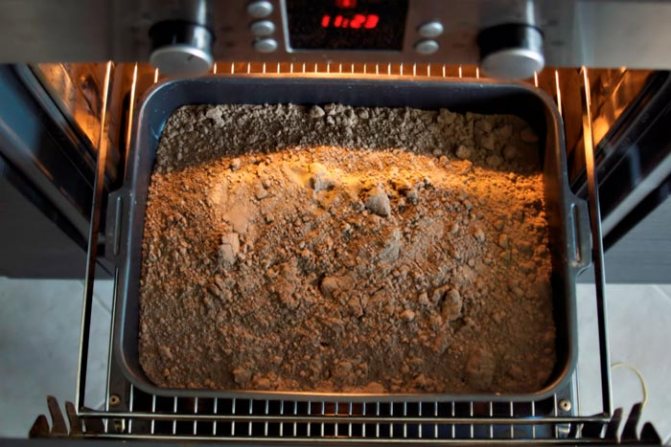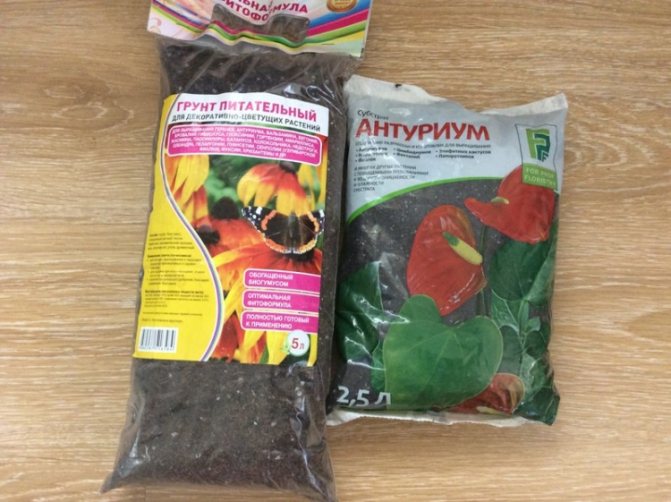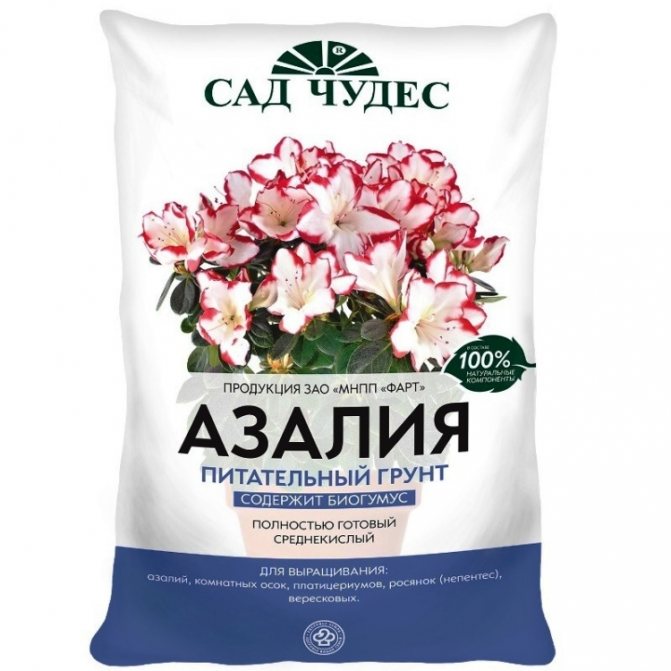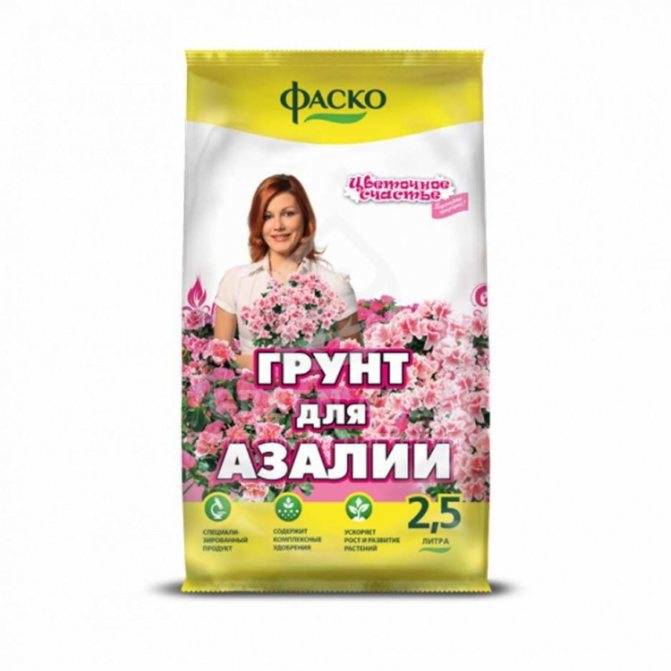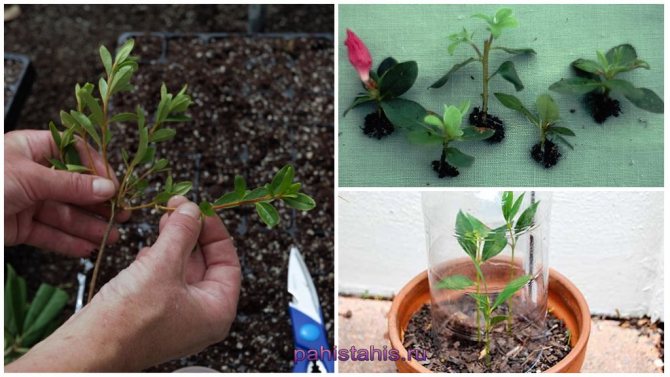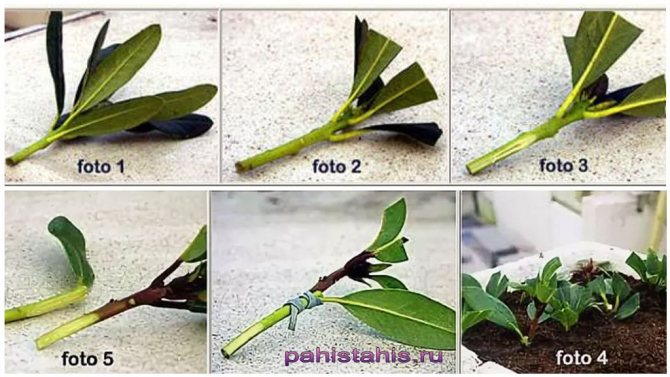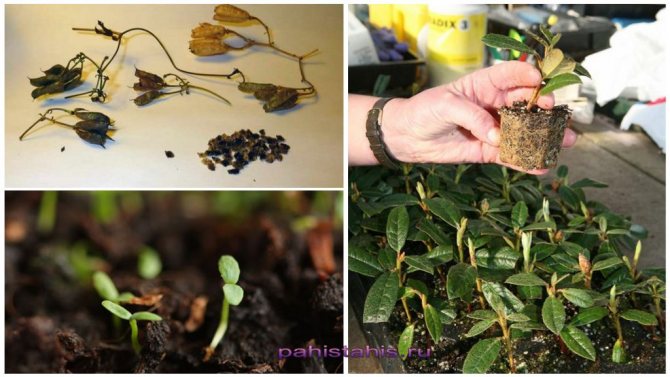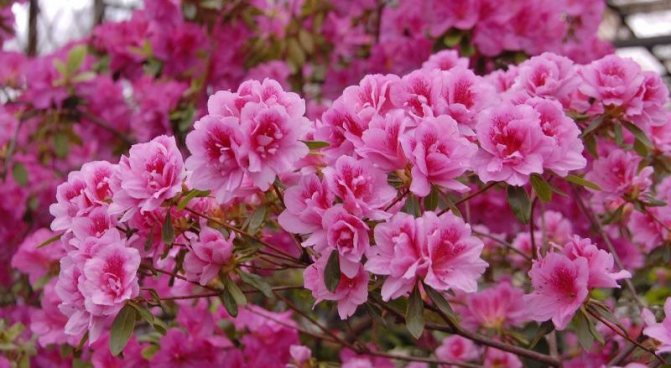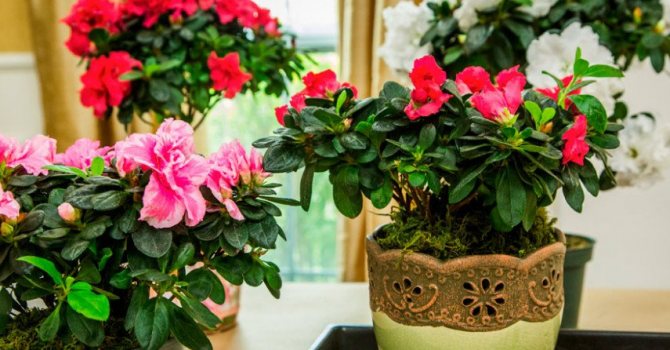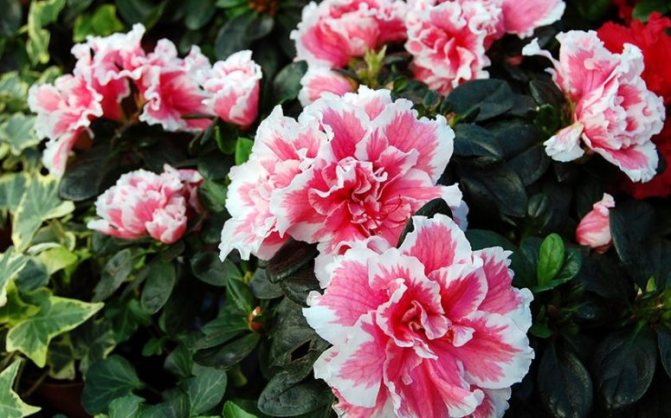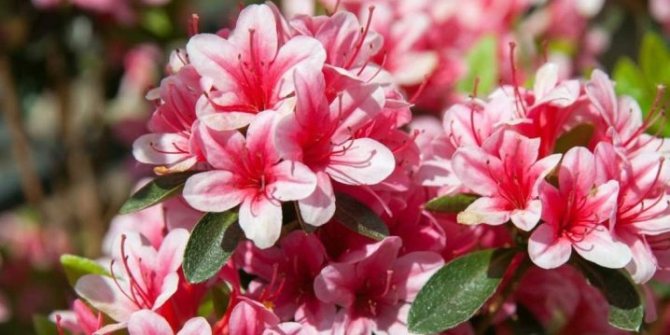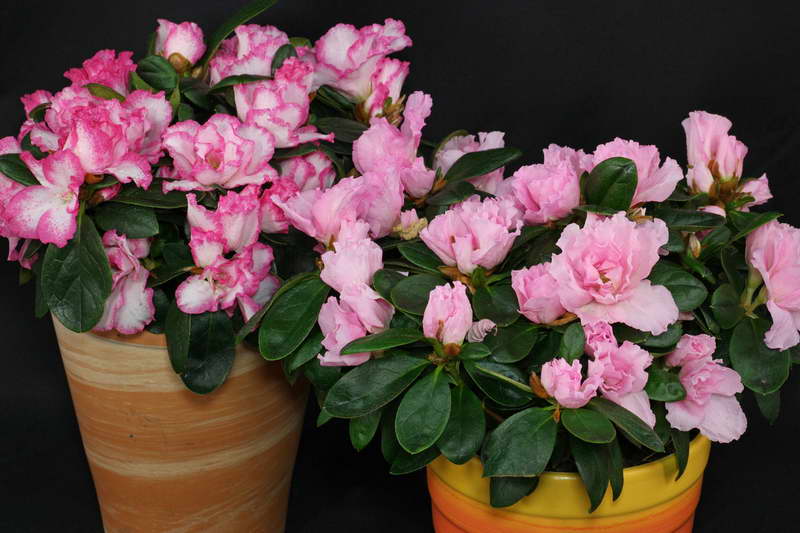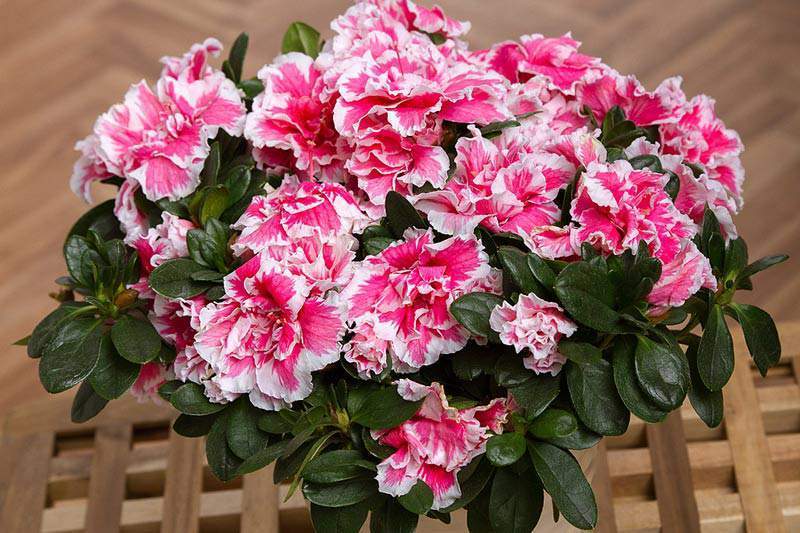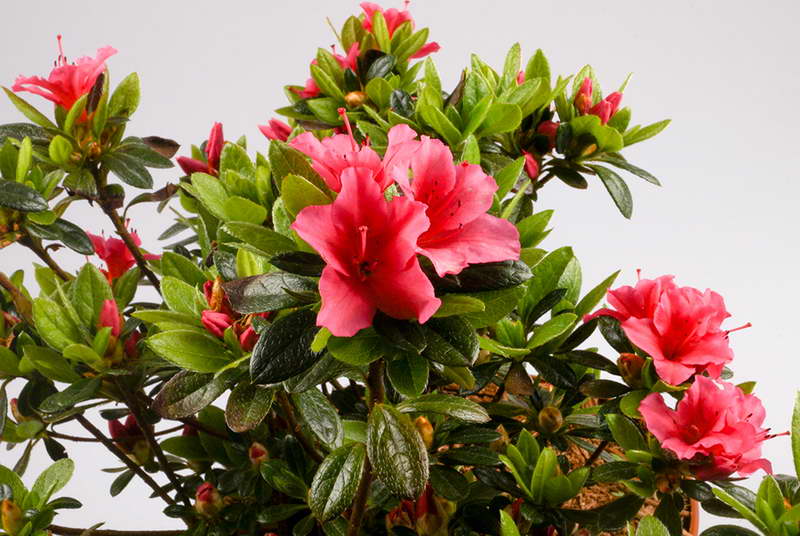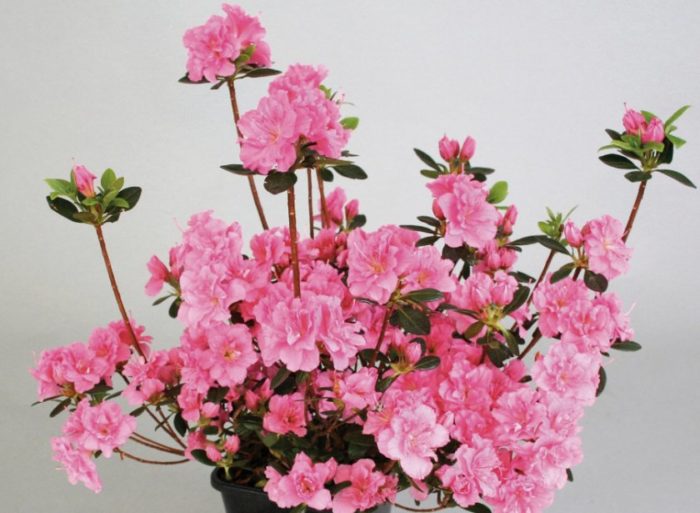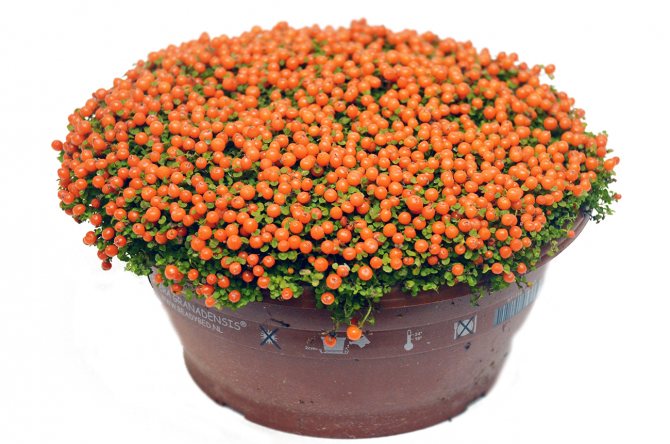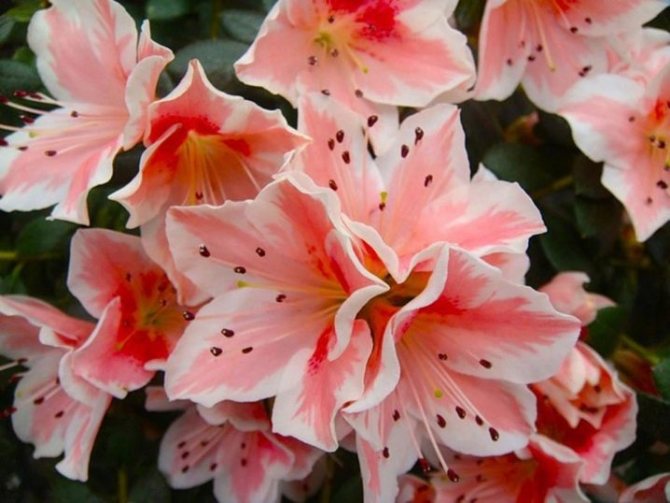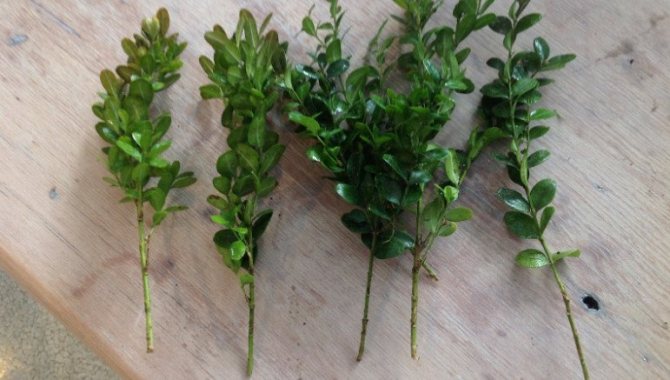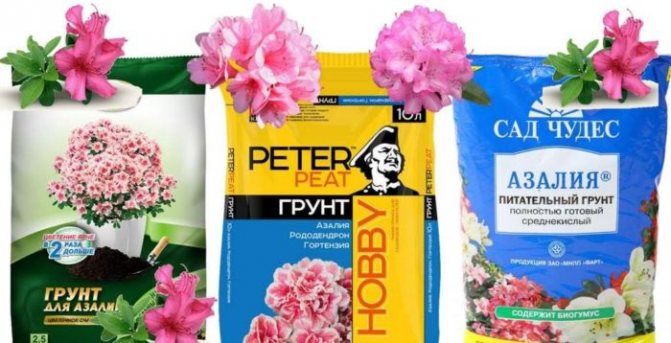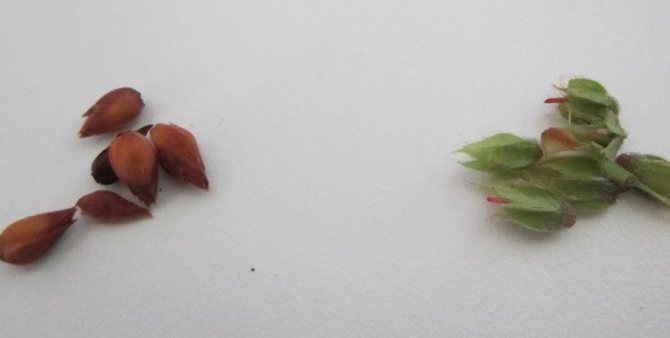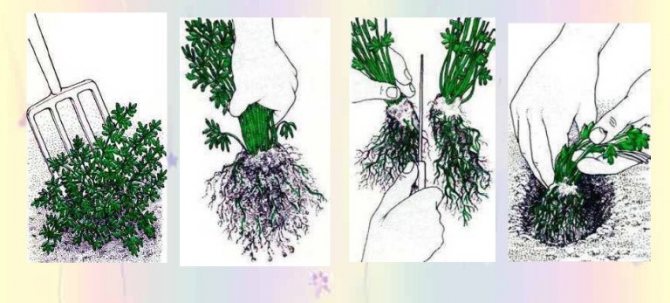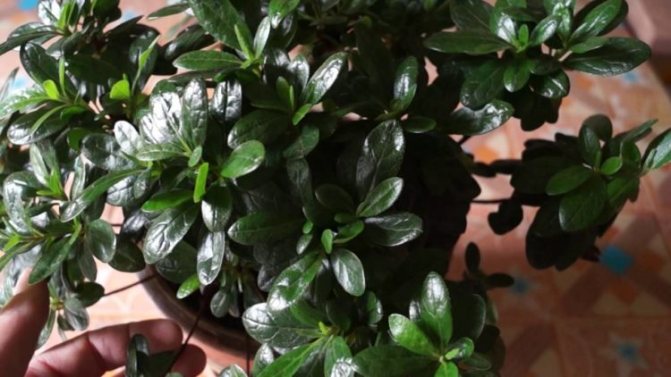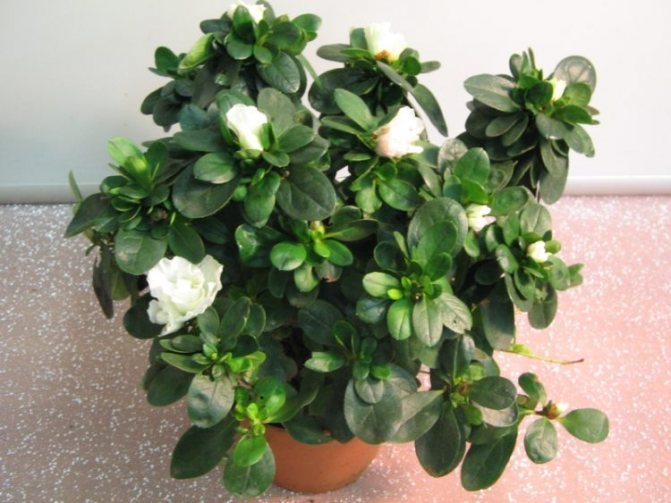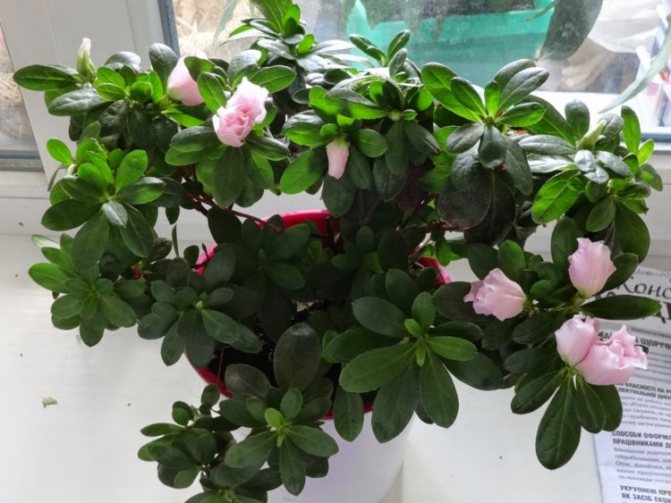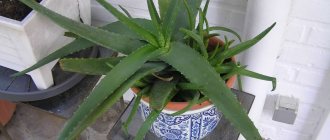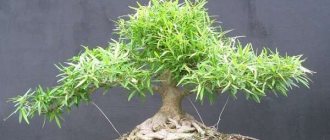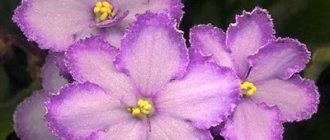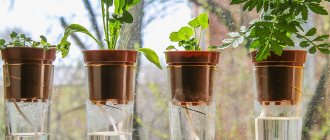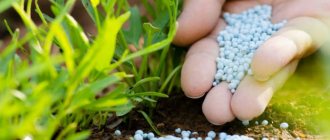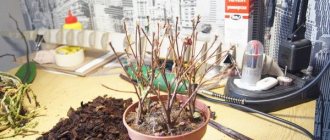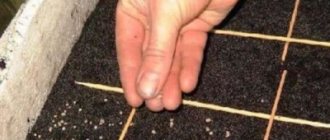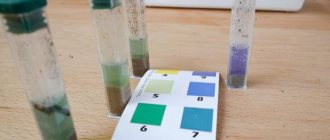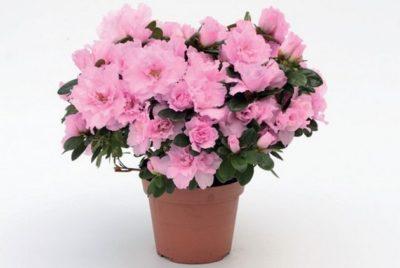
Azalea is a beautiful and very delicate flower. From the first days of staying in the house, this plant needs to be given increased attention. A lush blooming bush brought from a store, without proper care, can shed leaves and buds and even die.
To prevent these unpleasant events, you need to know how to properly maintain the azalea after purchase in the store, as well as how to transplant the flower and whether it can be done when it is in bloom.
Required composition
The soil for azaleas has its own characteristics. The fact is that fungal symbiont microorganisms live in the roots of the azalea. They help the plant to receive nutrients from the soil, if they die, then the plant subsequently dies. An acidic environment is necessary for their life, Soil pH should be between 3.5 - 5.5.
What kind of soil does rhododendron like? The composition of the earth for this plant must necessarily include:
- coniferous land;
- peat;
- biohumus;
- minerals;
- river sand and perlite.
Azalea is very demanding on the soil. Therefore, what works for other plants (less capricious) will not always work for azaleas. But at the same time, it is quite possible to grow other plants in the soil suitable for azaleas.
Azalea soil is suitable for some plants that prefer acidic soil. It can be used to grow:
- gerberas;
- heather plants;
- philodendron;
- cranberries;
- hydrangeas;
- geraniums;
- platyceriums.
Azalea: transplant
Transplant the azalea only if necessary. A young plant that has not even turned 3 years old is transplanted once a year, if the plant is older, then twice a year. The reason for transplanting an azalea can be a highly overgrown root system, which tightly enveloped the substrate, or rotting of the substrate with all kinds of formations on the surface.
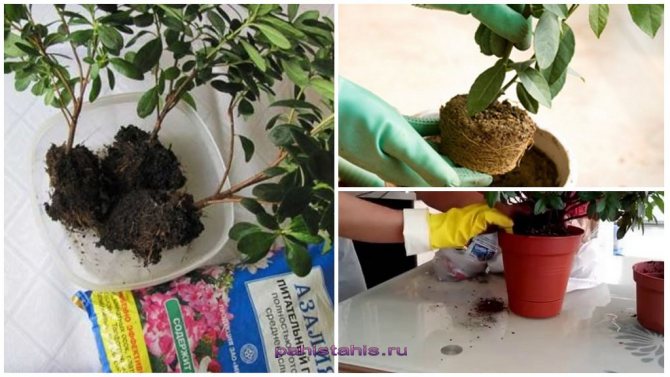

Azalea transplant
On a note!!!
After buying an azalea in the store, you should not transplant the flower as long as possible. The plant should be given time to adapt to new conditions.
Which is better - ready-made or self-made?
For azaleas, both ready-made soil and prepared independently are suitable. For novice florists, it is preferable to buy ready-made soil. Since this will help save time and effort. There are many manufacturers of plant mixes. Such mixtures vary, both in price and in quality.
Review of store mixes
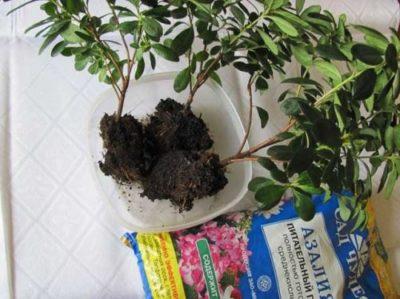

Consider which ready-made plant compositions are suitable for planting rhododendrons.
- Fasco soil for azaleas (rhododendrons) positions itself as a professional specialized product, the composition of which ensures abundant flowering, accelerates the growth and development of the plant. It includes: lowland and high-moor peat, drainage, complex fertilizer with microelements.
- Ready soil "Garden of Miracles" - This is a medium acidic, loose soil, it contains a small amount of nutrients, contains sand and perlite. According to the data on the package, the soil is made from a mixture of high-moor peat, purified river sand, perlite, vermicompost, mineral fertilizer. The fertilizer contains the required amount of micro and macro elements in a form suitable for plants.
- Soil mixture "Soil World". According to the data on the package, it contains a full set of essential elements of micro- and macroelements for the normal growth and development of azaleas. Its composition is a mixture of high-moor and lowland peat, chalk, lime, dolomite flour, minerals, vermiculite, sand. The manufacturer promises high decorativeness, abundant lush flowering, as well as good growth.
- "Rich Land" - substrate for azaleas. According to the data on the package, this is a slightly acidic soil pH 4.0 - 5.0. Prepared on the basis of white peat and coconut fiber. The composition includes agroperlite, sand, mineral fertilizers, white peat, coconut fiber. Promotes rapid growth of the root system, ensures the healthy development of the plant. Positions itself as a premium primer.
- Soil for anthurium meets the soil requirements for azaleas. In principle, such a soil can be used for azaleas. But the azalea is more capricious and demanding. Therefore, if there is an opportunity for an azalea, it is better to purchase a separate soil designed specifically for it.
As you can see, in soil mixtures of different manufacturers, the composition is somewhat different. But each one promises great results. The price also differs. If you have enough experience, you can prepare the soil yourself. Self-preparation of the soil is by far the best option.
There are several reasons for this:
- You are in control of the preparation and creation of the mixture.
- You can control the composition: where are the ingredients taken from, their quality, safety and environmental friendliness.
- You yourself make up the proportional ratio of the components in the mixture.
- When you buy a mixture in a store, you only see the inscription on the package, and you have to trust it. In fact, you don't know what you are buying. By preparing the mixture yourself, you can be completely sure of its quality.
Step-by-step instructions on how to prepare the soil at home
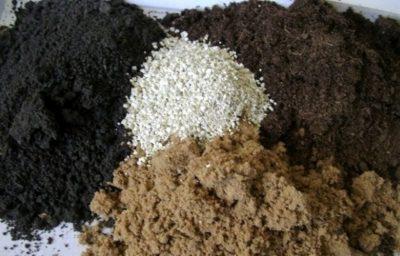

You can prepare the substrate yourself, but for this you need to find all the necessary components. What kind of soil is needed for rhododendrons? The soil must necessarily contain coniferous land, and it is also very desirable to add charcoal (crushed), sphagnum moss, steamed pine bark (as an acidifying component) there. You should also add river sand, perlite or vermiculite, they act as soil loosening agents. Expanded clay can be used as drainage.
- coniferous land - 2 parts;
- leaf land - 2 parts;
- peat - 1 part;
- heather land - 1 part;
- river sand - 1 part.
Reproduction of an azalea flower by cuttings
The apical parts of the shoots of the last year, 7-9 cm long and with several fully formed leaves, are taken as cuttings. The cut is made obliquely with a sharp knife or blade. The bottom three leaves are removed, leaving a small portion of the cutting. All other leaf plates are shortened by half.
To make the propagation of azaleas at home easier, before planting in the ground, the cuttings are immersed in a solution of a root system growth stimulator for a couple of centimeters. This processing takes 4-6 hours.
Rooting of the planting material is carried out in a loose substrate with an acid reaction. The cuttings are deepened by no more than 2 cm at a distance of 3-4 cm from each other. In a greenhouse and dim light, future plants will have to spend 1.5–2 months. The entire period of cuttings is necessary:
- contain at a temperature not lower than 25 ° C;
- water moderately;
- spray with warm, settled water;
- ventilate to prevent condensation and mold.
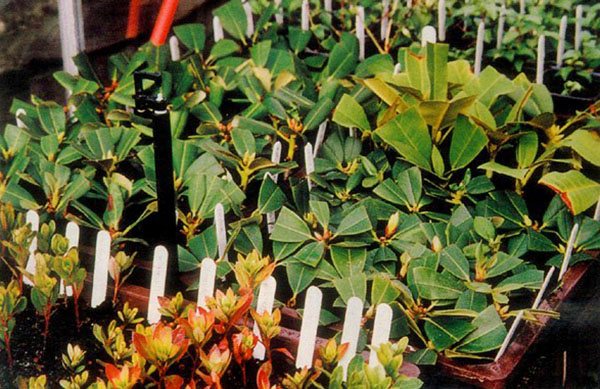

To form a uniform crown, the planting container is turned from time to time. Azalea flower cuttings are removed from the greenhouse when their own shoots begin to form on them.Then young azaleas are transplanted into their own small pots and pinched, which will lay the foundation for the future crown of the plant.
After rooting and until an adult flowering plant is obtained, it takes 2 to 3 years. Since the azalea weakens noticeably after flowering, it is better to remove the first buds from young specimens.
How to choose a composition for a houseplant?
The composition of the soil for Azalea must include the following components:
- Leafy land. It is light and loose and is good for air and water. Such soil has an average nutritional value and is obtained by rotting the leaves of trees. Leafy soil enhances acid reactions. Get it as follows. At home, in the fall, they collect fallen leaves and leave this heap for one or two years to rot. Then they are used to grow indoor plants and to increase the acidity of the soil.
- Coniferous land Is a loose earth with an acidic reaction. The pH of the coniferous soil is 4–5. What kind of land is taken under coniferous trees, but not from above, but from below. The needles of the soil should be well rotted. Coniferous soil is light, airy.
- Peat land also differs in lightness and looseness. Such land must necessarily be part of the soil. Its acidity is 3.5–5.5. Such a soil perfectly provides the mineral balance of the soil mixture. Peat land is obtained from high-moor peat, the decomposition period of which is not less than a year. Perfectly improves the general composition of the soil, gives it nutritional value and looseness.
- Heather land it has a high organic matter content and high acidity. However, it is poor in phosphorus, potassium and nitrogen. In terms of its properties, it is very close to leaf and peat soils. Get it in places where heather and other similar plants grow. The leaves and stems of heather rot and form a fertile layer. How correctly such a layer is no more than 3 centimeters. Such soil has high air and water permeability, as well as high heat capacity.
- River sand, as a rule, is used in floriculture as an additive to an earthen mixture. Sand does not accumulate moisture and does not increase the moisture holding capacity of the soil. Water remains only on the surface of a grain of sand. Only clean sifted river sand is suitable for growing azaleas. Before being added to the mixture, it must be processed: rinsed and calcined in the oven for disinfection.
Read also How to eat pumpkin properly
About the plant
Azalea belongs to the heather family. It is an evergreen shrub from 40-50 to 150 cm. It has small dark green pubescent leaves. Flowers are simple or double. They have a variety of colors: from white to dark purple. Different varieties of azaleas bloom from November to April for 40-60 days.
The plant was discovered at the end of the 18th - 19th centuries, in England. During his travels, the Dutch scientist Brainius discovered a plant that amazed him with its beauty. It was strewn with fabulously beautiful flowers. The bush left him no choice. He brought it to his homeland, but after a short period the plant did not take root and died. After some time, another traveler and scientist Conners, attempted to tame the azalea, but also unsuccessfully, the bush could not stand the move and died.
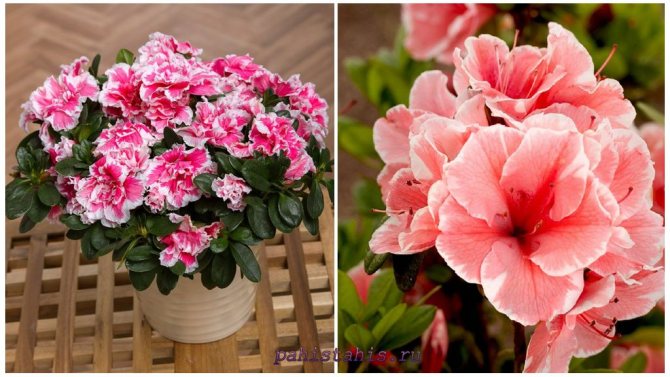

Azalea or rhododendron
Only at the beginning of the 19th century, Captain Wellbank brought the first specimen of an azalea from India, which he managed to engraft. This specimen became the ancestor of various hybrids and varieties of azaleas. The work done by botanists cannot be underestimated, because their long-term selection work contributed to the birth of this beautiful evergreen shrub, which pleases us with its lush flowering all year round.
In order to successfully grow an azalea at home, it is necessary to provide the flower with optimal living conditions. These include lighting, temperature, humidity and proper watering.Not the last place is taken by plant feeding. It is thanks to her that the plant blooms profusely and for a long time.
Rhododendron planting tips
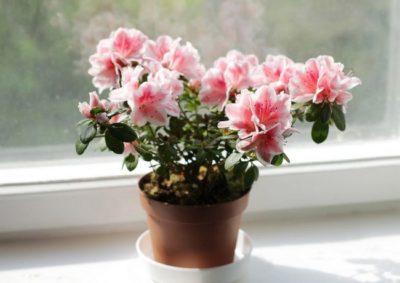

- Azalea loves diffused light. Direct sunlight is destructive for her. The western or northern windowsill are the most suitable places.
- The room where the azalea grows should be cool enough. A suitable temperature is 15-18 degrees. This is the optimum temperature for bud buds.
- Azalea is a very moisture-loving plant, it requires daily spraying. But at the same time, blooming azalea should not be sprayed. A good solution is a humidifier.
- Watering. It must be regular. The water should be soft melt, rainwater. The water should be cool, but not icy. If the soil in the pot becomes too dry, the plant can be immersed in a container of water for 1-2 hours.
- Transfer. A young azalea requires transplantation once a year, an adult one time 3-4 years. Particular attention should be paid to the roots. They are fragile, delicate and easily damaged. Damage to the roots can lead to the death of the plant. Another important point when transplanting is the root neck. It cannot be buried in the ground.
You can find out in what period of time it is better to plant rhododendrons in this article.
Plant care after purchase
It depends on how the adaptation period passes, whether the azalea will grow and bloom well. To make it go well, they examine her at home. Find out if there are traces of mold on the ground. If they are, process the potting soil. antifungal drugs ("Fundazol", paste "Fitosporin-M", "Trichodermin").


After examining the plant and making sure that there is no fungus, the pot is placed to the north or east window. Shade it from direct sunlight
In a new place, where the temperature should be up to + 18 ° C, at first azalea should not have "neighbors": good appearance does not mean its health and the absence of pests. Maintain high humidity by spraying the flower with a spray bottle or placing an air humidifier in close proximity to it.
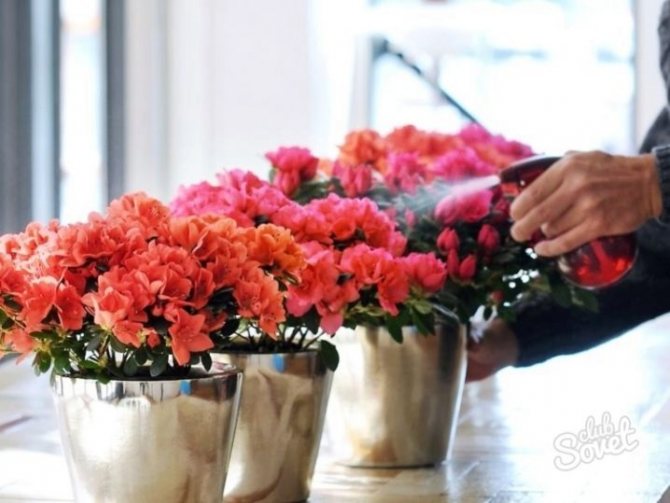

In order not to infect all indoor plants, the azalea is kept in quarantine for 14 days. If during this time ticks, whiteflies and aphids have not appeared, rearrange the pot to other crops.
Possible errors and their correction
- The ground is too hard... If you plant an azalea in what kind of soil, then most likely the plants will not survive. Since the food will be difficult. The solution is to transplant or transship the azalea into more suitable soil.
- The earth is not acidic enough. In this case, symbiont fungi will die, which means that the plants will not receive the necessary amount of nutrients. The solution is to acidify the soil with special additives or transplant the plant.
- Excessive peat content... This is especially true of low-lying peat, which is heavy and moisture-consuming in structure. If there is too much of such peat, then moisture will stagnate in the soil, which can lead to root rot. This problem can also be solved by transplanting the plant into a more suitable soil.
One of the basic conditions for Azalea's wellness is soil. Suitable soil is nutrition, moisture, normal metabolic processes in the plant's body. If the soil is not suitable, the plant will not lead, and is unlikely to survive.
If you find an error, please select a piece of text and press Ctrl + Enter.
Indoor azalea is the favorite of all flower growers. And even the capriciousness of the plant does not stop lovers of indoor flowers from acquiring such a beauty. If all the necessary conditions are met, the flower will give a long, lush and bright flowering. One of the most important conditions for successful cultivation of azaleas is the correct selection of soil. This article explains what soil is required for an azalea.
Azalea: lighting
Azalea likes bright light, but not direct sunlight, which can burn the leaves. Window sills facing the east, west and north sides are suitable for her. When the azalea is located on the south side, the flower should be covered with a matte sheet of plastic. Providing the plant with diffused light.
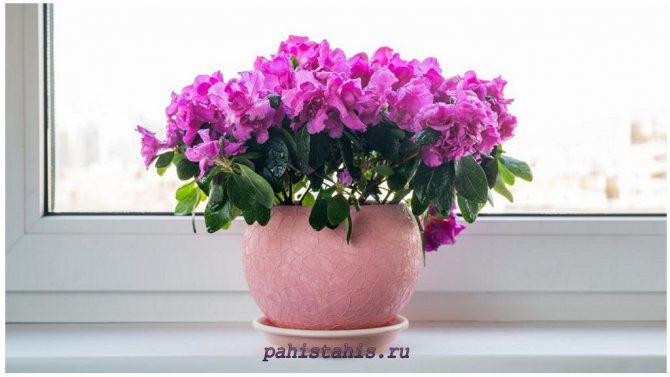

Lighting for azalea
In winter, the azalea suffers from a lack of light. To increase daylight hours, the flower is equipped with additional illumination in the form of lamps with fluorescent lamps.
Azalea home description, photo
Azalea is a dwarf plant called the "rose tree". A feature of the culture is lush flowering in the winter. In the Alps, these wonderful flowers are called "roses", because in its appearance the bud strongly resembles a true rose. This variety belongs to the extensive and popular genus - Rhododendron. A native indoor flower from Japan and China. However, in the wild, bushes can be found in southern Europe and North America. Translated from Greek "rhodon" means "rose", and "dendron" - "tree". That is why the name "rosewood" is quite reasonable.
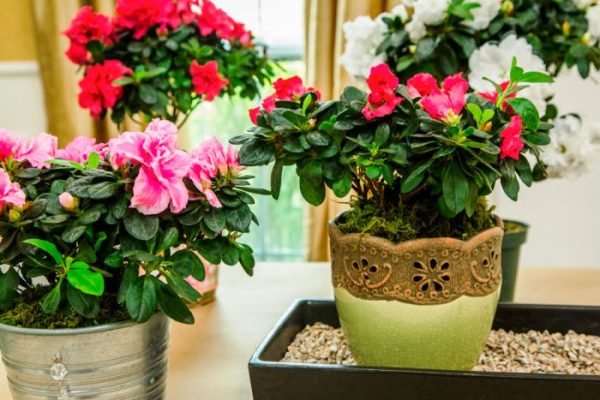

After the discovery of a wild species in the mountains, scientists began to work on the selection and breeding of various varietal species. The result of many years of work has become more than 10 thousand varieties and types. Many cultures have a special place for azaleas. In Europe, for example, a flower is the main decoration of the Christmas table and is a symbol of family happiness and well-being. Depending on the varietal species, the height of the bush can reach 1.5 m.The indoor flower usually does not exceed a height of 60 cm.
The stems can partially grow stiff, the lateral shoots branch beautifully on both sides. The foliage is deep green in color and has a semi-oval shape. The buds are considered the main value of the plant. They gather in a complex inflorescence and form far away in the leaf axils. The shade of the inflorescence can be varied. The most common are scarlet, snow-white and cream buds. A home bush, after purchase or transplantation, can continue to bloom throughout the season.
On the territory of Russia, the rose tree appeared at the beginning of the twentieth century, and was grown exclusively in botanical gardens. In nature, there are about 350 varieties of flowers. In home cultivation, Indian and Japanese azalea have gained popularity. These varieties are evergreen shrubs, not exceeding 50 cm in height. Japanese azalea can be grown in the backyard.
Appointment
The shrub is highly branched. It has lanceolate, elliptical, ovoid leaves. They are pubescent on both sides. Depending on which species the azaleas belong to, they can be one-color - white, pink, red, purple, purple, dark red - or variegated buds. They can be terry or plain.
Azalea is one of the plants that are finicky and moody. In warm regions, it is grown in the garden, and in cold regions - on the window. Florists breed it to enjoy the extraordinarily beautiful flowering.
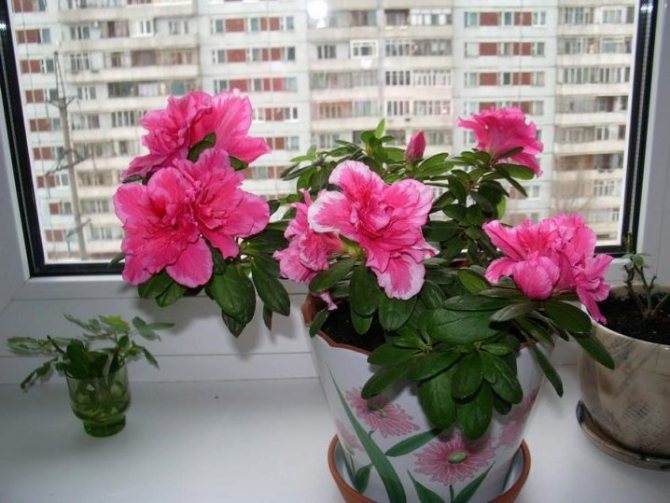

A representative of the genus rhododendron is a valuable ornamental plant that is formed as a standard tree or as a dwarf tree. It has a long flowering period. Florists use azalea in their bouquets.
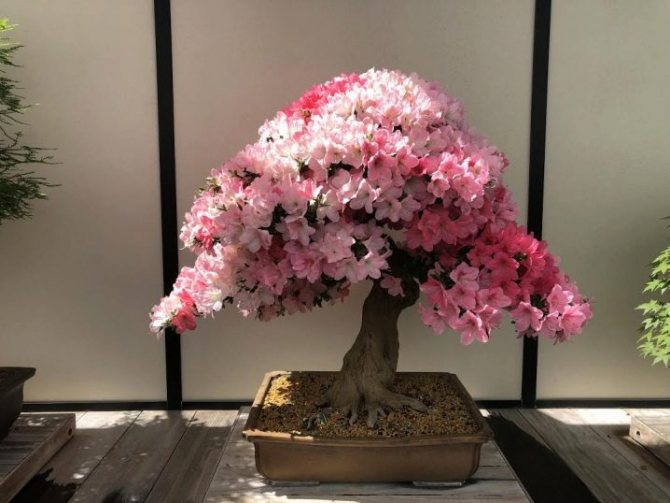

How to make soil for azalea yourself
Before each grower, the question always arises: buy ready-made soil for plants or prepare it yourself. The land for a flower must have certain characteristics. This is due to the fact that symbions live on the roots of the bush - fungal microorganisms. They promote the flow of nutrients from the soil to the stems. If microorganisms die, then the plant itself will die in the future. The soil mixture can be made independently, the main thing is to remember which components should be present, and what features the earth should have.
Components, composition
Azaleas (rhododendrons), like any plant, require a unique soil composition. Azalea makes special demands on the soil. The composition that suits other cultures always matches the characteristics of the rosewood. The soil should include:
- peat;
- perlite;
- mineral components;
- coniferous soil;
- river sand;
- biohumus.
Acidity
Azalea prefers an acidic environment, that is, the earth should be acidic. Indicators of an acidic environment should be in the range of 3.5-5.5 pH. Mushrooms that live on rhizomes do not survive in an alkaline environment, so acidity is extremely important for azaleas.
Read also How to cook pilaf in a cast iron
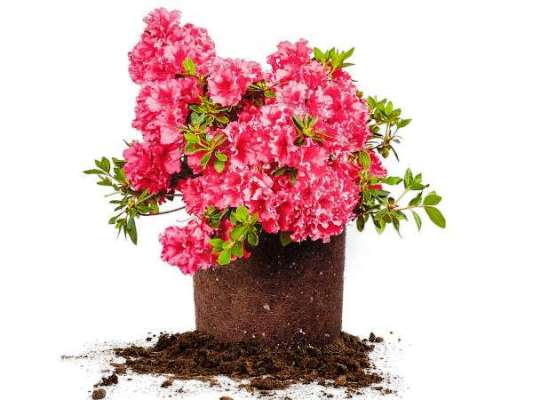

Proportions
According to its structure, the soil for a rhododendron should be light, loose, and at the same time permeable and retaining moisture. The composition requires a sufficient amount of humus. It is recommended to use a hydrogel to retain moisture. It accumulates moisture and evenly returns it to the bushes if necessary - in the hot season or when watering is delayed.
After determining what kind of substrate is needed, the proportions for self-preparation of the mixture should be clarified:
- coniferous land 2 parts;
- leafy soil 2 parts;
- high-moor and low-lying peat 1 part;
- heather soil 1 part;
- sand 1 part;
- drainage, preferably expanded clay.
Peat and coniferous, heather and leafy soil are important components of nutrient soil. Chopped and steamed pine bark is a useful additive. It will become an acidifier for the substrate. Also add sphagnum moss - after washing, drying and grinding. Moss contributes to soil disinfection.
Sand, perlite and vermiculite make the substrate friable and facilitate the passage of moisture and air. These indicators are very important for the root system. It is recommended to use expanded clay for the drainage layer. It must be poured onto the bottom of the container for planting layers 3-4 cm thick.
Azalea: temperature conditions
Since the azalea is a very capricious northerner, it is important to create comfortable conditions for its cultivation. The temperature regime plays an important role here. Azalea prefers to grow in cool rooms with air temperatures from +10 to +15 degrees. The maximum allowable temperature is +18 degrees. If at home it is not possible to create such a temperature, then you can:
- A pot of shrubs around the perimeter can be overlaid with ice cubes.
- Water and spray periodically with cool distilled or boiled water.
In winter, azalea feels great on closed loggias until the temperature there drops below +5 degrees. It is during this period from October to December that azaleas form flowers. The best location for a plant in winter is north and west. During the flowering period, the air temperature should not exceed 16 - 17⁰С. This is the optimum temperature to stimulate azalea flowering.
On a note!!!
Azaleas do not tolerate high temperatures and dry air, they require a cool, bright room with a temperature of 5 - 6 ° C in winter, and open air in summer.
Where to buy soil for azaleas
Manufacturers of related products of the florist got their bearings in a timely manner and realized that preparing a substrate for a rosewood is a responsible and time-consuming process that not everyone can master. They began to produce and produce special soil, which can be purchased by both beginners and experienced flower growers. Each flower shop has such substrates in its assortment.
Ready-to-use potting mixes for sale fully meet the requirements of the capricious beauty. The finished substrate contains a complex of trace elements and mineral components, which makes it possible not to use additional dressings for the first three months after planting the bush.Also, when acquiring a substrate, it must be remembered that one composition favorably affects the growth and development of the bush, and the other is intended for reproduction of the bush and sowing seeds.
Azalea: top dressing
Azaleas are fed every two weeks with mineral fertilizers. During the formation of buds, Superphosphate is used at a concentration of 15 g. for 10 liters of water. Alternatively, you can use a special fertilizer Azalea, which has everything you need for the growth and flowering of the plant. During the period of bud formation, to accelerate flowering, a fertilizer containing large amounts of phosphorus and potassium is used - Uniflor-Bud and Kemira-Lux.
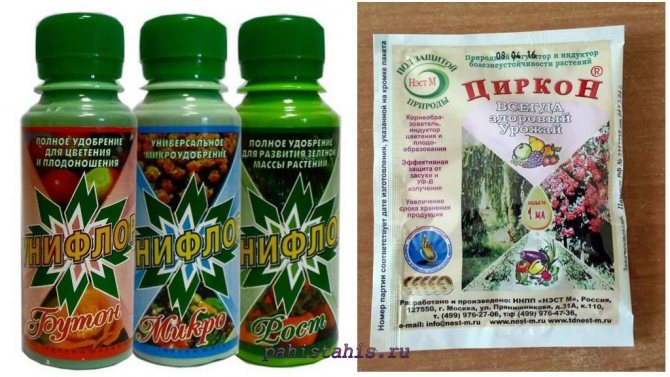

Fertilizers for azaleas
During the growing season, fertilize with preparations containing nitrogen, for example, Uniflor-micro. Zircon will be a good tool for feeding, stimulating flowering and root growth. This fertilizer is based on plant materials. The drug is economical (1-2 drops per 20 liters of water).
If the leaves of the azalea begin to turn yellow, this indicates a lack of iron. In this case, it is fed with iron chelate (ferovit). Iron chelate - soluble powder, proportion when used: 5 gr. 10 liters.
Overview of ready mixes
Next, let's take a closer look at which ready-made substrates are most suitable for planting rhododendrons:
The Garden of Miracles is a loose medium of medium acidity. It contains many nutrients, fine sand and perlite. Manufacturers indicate in the composition of high-moor peat, perlite, disinfected river sand, vermicompost and mineral fertilizers. The mixture includes the required amount of trace and trace elements in the form necessary for the flower.
"Rich Land" - slightly acidic soil for rhododendrons. Acidity indicators in the range of 4.0-5.0 pH. The mixture is based on white peat and coconut fiber. It also contains sand, mineral components, agroperlite. This composition of the soil contributes to the correct growth and healthy formation of the shrub. It is considered a premium primer.
"Fasco" - manufacturers declare that this is a professional specialized composition that promotes abundant flowering, accelerated growth and full development of bushes. The mixture includes: high-moor and lowland peat, a complex of fertilizers with microelements, drainage.
"Soil World" - contains a set of macro- and microelements required for the growth and formation of a beautiful bush. It contains mineral components, sand, lowland and high moor peat, dolomite flour, lime and chalk. Substrate manufacturers promise increased decorative effect, rich and vibrant flowering, and accelerated growth.


The soil for azaleas of various manufacturers differs in qualitative and quantitative composition. However, every soil manufacturer promises great results after planting. Different substrates and prices.
Azalea: bloom
The secret to the long blooming of azaleas is timely watering, low temperature and bright diffused light. In a warm room, the flowering period of the azalea is reduced, and in exceptional cases, the buds may completely fall off. If the ambient temperature is maintained at 12 degrees, the azalea will delight you with its flowering for 2 - 2.5 months. But if the temperature regime of 18-20 degrees is not observed, only 2 weeks.
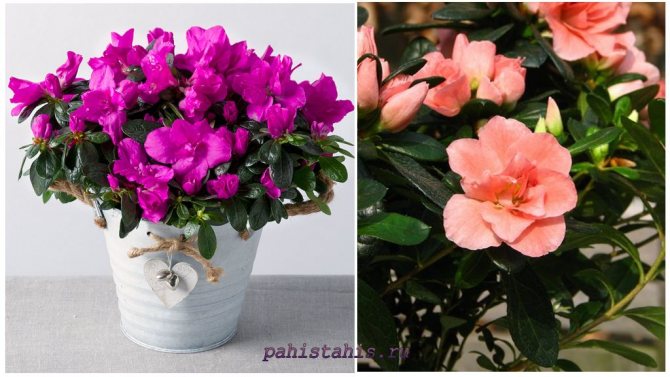

Blooming azalea
Azalea during the flowering period is covered with beautiful flowers. There are so many of them that they cover all the leaves. During the flowering period, azaleas can be shaped, carried and rotated.
When purchasing an azalea in a flower shop, be guided by the following principle: the plant should have several blossoming flowers, the rest of the flowers should be in the form of buds. With proper care, you will be able to see how the buds bloom. Azalea will transform before our eyes. After flowering, dried inflorescences are removed from the azalea and a crown is formed.
The soil for the propagation of azaleas
Growing azaleas involves proper and regular care of the bushes, reproduction and transplantation of mature plants. At home, propagation by cuttings is considered popular. When breeding, the land for azaleas is selected with special care. It is imperative that the soil is decontaminated and includes all the necessary components for proper and fast rooting of cuttings.
Soil acidity is still the main condition. Also, the substrate must provide the seedlings with nutrients. When planting, you should use a mixture of peat (high moor), sand and coniferous soil in a ratio of 1: 1: 2, respectively.
In the process of planting, it is necessary to place a drainage layer (expanded clay or gravel) at the bottom of the tank. Then it is recommended to add two handfuls of medium-sized sand. The sand should first be sieved, calcined and disinfected. A mixture of coniferous earth and softened peat is poured over the sand. It is also recommended to add vermiculite to the substrate for the cultivation of azaleas. Such a soil mixture will contribute to the rapid and correct formation of the root system of the seedlings.
Azalea shrub propagation by layering
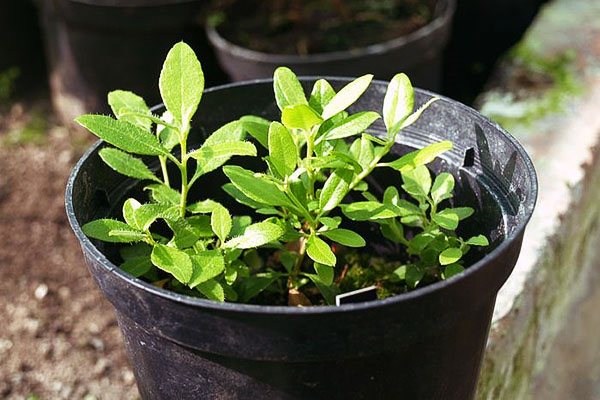

For propagation of azaleas at home, you can use layers rooted in the spring. For this:
- shoots in the lower tiers of the bush are bent to the ground;
- with a sharp knife, a transverse cut is made on the wood, into which a match or a toothpick is inserted so that the cut does not join;
- the incision site is attached with a wire pin to the loose substrate;
- the tip of the shoot is raised so that it takes a vertical position, and is secured with a peg.
The cuttings in the place of their attachment to the ground are sprinkled with a substrate and watered. It takes several months before the formation of the root system and the separation of the young azalea flower from the mother plant. This usually happens by the fall, and by the following spring the seedling will be ready to be transplanted into a separate pot.
Azalea soil for transplanting
The first rosewood transplant is carried out immediately after purchase. After all, the plants in flower shops are kept in a temporary transport substrate, and the nutrient components of the culture are obtained through top dressing. An exception is flowering bushes or a plant during the period of bud formation. If a bush is disturbed at such an important period, it can discard greens and buds. And it is difficult to get a rose tree out of this state.
For a young plant, the maximum balance of nutrients in the composition of the soil for azaleas is extremely important. It should contain:
If you transplant the bush into favorable soil, then the fungal microorganisms living on the roots will be provided with the necessary substances to feed the roots and trunk. The best options for rosewood are peat, heather, and coniferous soil. These soils are loose, which is ideal for root development. However, the content of phosphorus, potassium and nitrogen in them is minimal and it is enough only for rooting. Therefore, in the process of growth, the bush will need additional feeding.
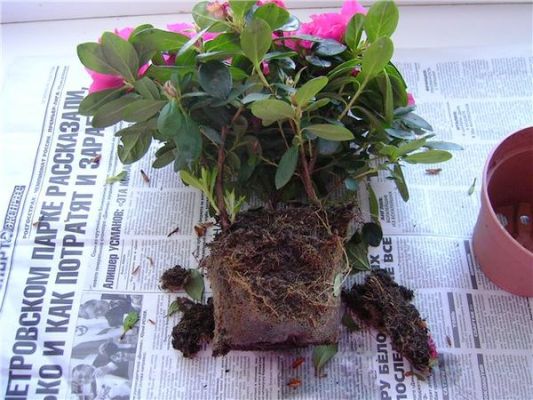

When replanting a flower tree, it is important to remember the fragility and sensitivity of the root system. You can not remove the earthen lump in which the roots have formed. It is necessary to carefully transfer the bush into a new container and add fresh substrate. Young bushes are transplanted every year, and a mature plant - as the roots fill the earthen space in the pot (once every 3 years).
How to determine if a room transplant is needed or not?
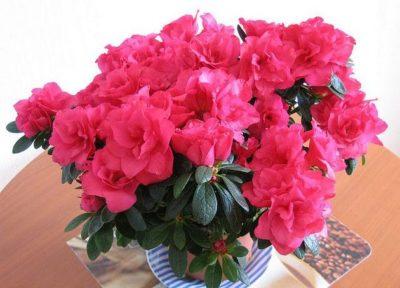

After purchase, you need to carefully examine the plant. In case of detecting mold, fungus, root problems, as well as in poor soil condition, the azalea needs to be transplanted into high-quality soil, removing the damaged areas.
It is recommended to replant young plants annually, adults every two years. The procedure must be carried out when the flowering period is over.If the azalea is poured or the pot has become small, an unscheduled transplant is required.
If the plant is flowering
Azalea should not be transplanted during flowering. At this time, the plant spends all its energy on forming buds and maintaining flowers. The transplanting procedure will lead to extreme stress, as a result of which the azalea can shed its leaves, flowers and buds. It is very difficult to get a plant out of this state. In the case when an urgent need to save the azalea, before transplanting, you must carefully remove most of the blossoming flowers and colored buds. You can find out more about when and how to transplant azalea here.
What kind of soil is suitable for growing at home?
It is necessary to choose the right soil for growing this houseplant. The fact is that when creating ideal conditions, the azalea will still gradually die if the land does not suit it. This is critical, therefore, each grower, buying a new crop, should carefully study the soil in which to grow it.
Soil acidity
The plant prefers an acidic environment, so it is necessary to select the right soil. Here are the basic requirements:
- the minimum pH level is 3.5;
- the optimal pH level is 4.5;
- the maximum pH level is 5.5.
Thus, it is necessary to periodically add citric acid to the water before watering in order to maintain the required level of soil acidity.
Composition of the earth
It is very important to understand how to create the soil yourself. It should consist of the following components:
- coniferous land;
- peat;
- vermicompost or other organic fertilizers;
- mineral substances;
- perlite or river sand.
Azalea: watering
Watering is also important when growing azaleas. The flower is hygrophilous. Its soil should always be slightly moist, but not wet. Watering an azalea comes down to a simple rule: the lower the temperature in the room, the fewer times you need to water the azalea. Conversely, the higher the temperature in the room, the more often the flower is watered.
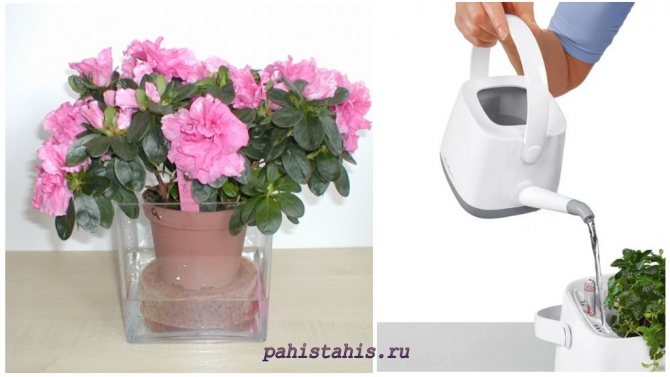

Watering the azalea
If it turns out that the soil is completely dry, then the flower pot should be placed in a wide container with water, no more than 4 hours. After such a procedure, you can return to normal watering of the azalea only after 3 days.
In sunny and hot weather, the azalea should be sprayed and watered twice a day.
On a note!!!
When watering, it is categorically not recommended to use tap water, it is best to boil it or, in extreme cases, let it settle. The most favorable for watering azaleas is rainwater (melt) or distilled.
To maintain the acidity level of the soil, it is recommended to water the azalea with a citric acid solution. He is preparing their calculation: for a two-liter can of 1 tsp. citric acid.
The accumulation of excess water can harm azaleas, so it must be removed. Otherwise, the root system will rot. If the air humidity is low, it is recommended to place the pots in moist peat.
What fertilizers are suitable for a flower?
The flower grower should pay great attention to feeding. If you enter them incorrectly, you can destroy the culture. A lack of nutrients is less damaging to the flower than an excess. In this case, root burns are possible, especially when organic fertilizers are used. It is worth considering in more detail all the nuances of feeding azaleas.
First feeding
There are certain fertilization rules for the normal growth of azaleas.
- The first feeding should be done in early spring. This will allow the plant to gain strength after flowering. The flower is fed every two weeks. It is recommended to use mineral fertilizers, as they will not burn the azalea root system.
- Small amounts of nitrogen should be added in mid-spring and summer. Phosphorus and potassium are additionally introduced since August.
- Once every three months, it is required to water the flower with the addition of citric acid to maintain the optimal level of soil acidity.
- It is forbidden to introduce top dressing in dry form, as this can lead to problems with the development of the root system.
If the plant lacks nutrients:
- deciduous plate changes color;
- the flower stops growing;
- development phases slow down;
- the shade of the shoots changes;
- flowers and buds fall off.
So these problems clearly tell you to add nutrients to the soil.
How to feed the plant after flowering?
After the flowering process, it is necessary to use complex mineral fertilizers based on nitrogen, phosphorus and potassium. They are necessary for the flower to gain strength and recover quickly. In this case, they must be added in liquid form. Experts recommend first diluting the fertilizer in a smaller proportion than indicated in the instructions in order to study how the crop will react to feeding. If there are no problems, you can continue to enter it according to the instructions.
Here are some suitable fertilizers for azaleas:
- Cycron. Helps develop the root system and also rebuilds the plant after flowering. Application every four days.
- Epin added by spraying the leaves, which themselves absorb nutrients. It is forbidden to use it during flowering.
- NV-101 is the most economical remedy, since two drops are enough to saturate the plant with trace elements that it needs for normal existence.
- Ferovit Is an iron based fertilizer. Allows the flower to sprout quickly. Recommended for use as a spray.
- Fitosporin-M used if the azalea is often poured. Allows you to protect the roots from decay processes.
Azalea after purchase: risks and necessary measures
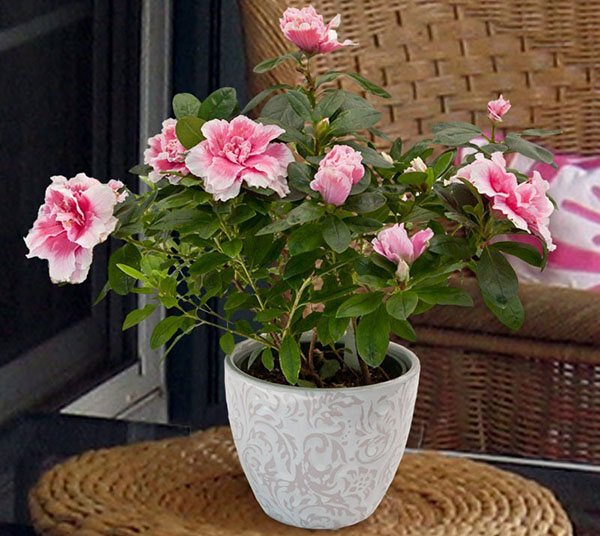

To provide the flower with a long and happy indoor life, immediately after purchase, the azalea is carefully examined.
Nurseries producing domestic plants care little about the development of the root system and the further growth of the azalea. The shrubs, artificially brought to the flowering stage and planted in transport pots with a small amount of peat mixture, are additionally treated with retardants, synthetic substances that introduce the culture into a kind of sleep. Sustained-release fertilizers are added to the soil mixture, the supply of which maintains the freshness and flowering of the plant for 2-3 months. Roots, often damaged during transplantation, do not develop at this time. The plant is at risk of pest and fungal infections.
It is not surprising that moving from the store to the windowsill, the new pet weakens after a while and may die. The initial inspection of an azalea after purchase is aimed at identifying existing and developing problems and deciding on further actions:
- The peculiarity of the azalea is that a specific microflora is formed around the root system of the plant, the violation or removal of which threatens with problems for growing a crop.
- Excessive moisture in the soil is equally dangerous, leading to rotting of the small roots and root collar of the azalea.
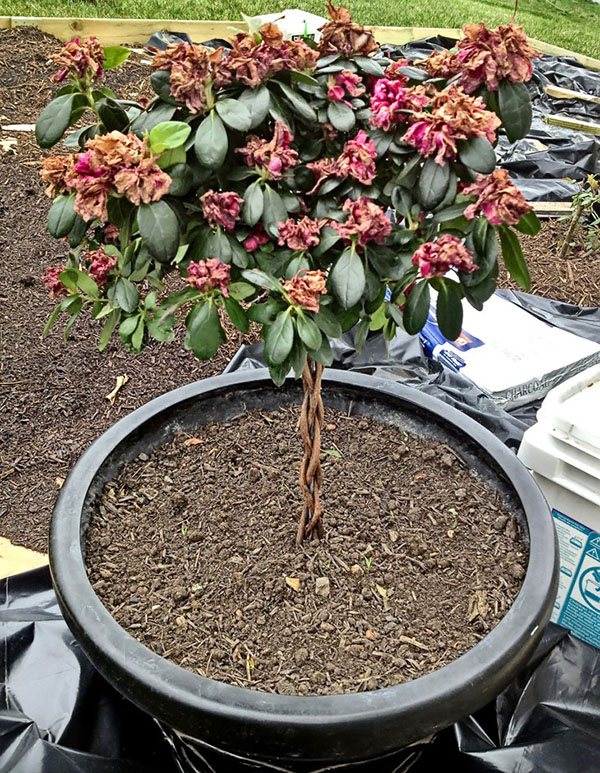

If, after buying from the azalea, problems with the root system are found, the condition of the soil is suspicious, there are traces of mold or salinity, it is better to transfer the plant to another container, removing damaged tissues and poor-quality soil.
Do not transplant an azalea covered with flowers or buds. Transferring to another substrate will be a severe or irreparable stress for a culture that spends all its energy on many flowers.
When it comes to saving a shrub, it is better to carefully remove most of the blossoming corollas and colored buds before transplanting.
It is dangerous to transplant an azalea in winter, when the plant is at rest, life processes, including restorative ones, are inhibited.It is better to try to wait for the renewal of vegetation and transfer the revived shrub to fresh soil.
Description of azalea
There are several types of azaleas, but most often flower growers bred at home it is indoor, so it is worthwhile to dwell on its biological description in more detail.
general characteristics
Culture has several features that make it easy to distinguish it from other colors:
- The plant is highly branched, but not tall. Its height rarely exceeds 150 cm.
- Young shoots have a large number of brown or gray hairs.
- Leaves are lanceolate, their length is up to 3 cm. From below they have rather dense pubescence.
- During flowering, two to six buds can be observed. They are located practically in the leaf axil.
- Azalea blooms in winter and early spring when favorable conditions are created. The first bloom is four years after planting.
- The stem is rather dense, tree-like.
Today there are a large number of varieties of this culture. It grows at home and in its natural environment. Moreover, in natural conditions, the plant is much larger.
These are the types that are considered the most popular today:
Moreover, each species has a large number of subspecies. The main differences are in the following characteristics:
- the color of the buds;
- the form of flowers (terry, non-double, semi-double);
- the height of the bush;
- susceptibility to various diseases.
Transplant features
Azalea transplant is accompanied by the following actions:
- Removing the plant along with the earthy clod from the pot.
- Partial removal of old soil.
- Renewal root pruning.
- Treatment of the root system with a growth stimulator.
Root pruning
Azalea has very fragile and thin roots that entangle an earthen ball. After removing from the pot, the root system is trimmed with disinfected scissors about 1 cm from the bottom, at the root collar and on the sides. This is done to improve the access of oxygen and moisture to the roots.
You should also make several longitudinal cuts in the earthen coma. To minimize trauma to the roots, after pruning, the plant with an earthy clod is soaked in clean water with the addition of a growth stimulator and zircon. When the soil is wet, it will be easier to remove it from the roots.
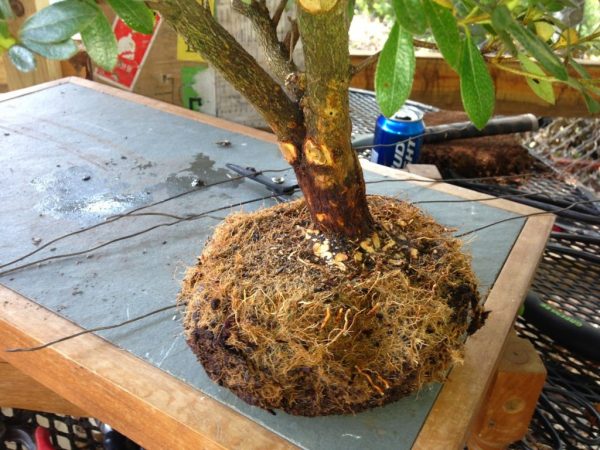

Cut thin roots.
Splitting an azalea
If the flower has grown and several bushes coexist in one pot, they must be separated. Plants growing in the same pot will interfere with each other. Division is carried out after pruning the root system. Each bush is planted in a separate container. If necessary, prune the crown - pinch young shoots, leaving 2-3 pairs of leaves.
Planting process
A drainage layer is placed on the bottom of the pot. It can be pebbles, expanded clay, broken brick fragments. Pine bark is optionally placed on this layer - it will increase the acidity of the soil, and the azalea loves it. Next, the plant is carefully placed in a pot and sprinkled with prepared soil.
The root collar is not buried. It should be flush with the ground. The soil is tamped and watered with a solution in which it was soaked.
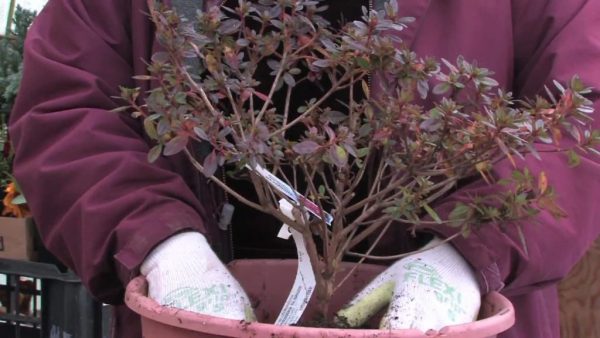

When planting, do not deepen the root collar.
Difference from rhododendrons
Even not all experienced growers know what is the difference between rhododendrons and azaleas. This is very relevant, since both cultures belong to the same heather family. For a long time they were indistinguishable by botanists. The genus azalea was at one time abolished, that is, all types of azalea were attributed to rhododendrons.
Today in botany, azalea is not a separate family, since the differences between it and rhododendron are minor:
- Azalea is a deciduous rhododendron;
- the azalea has a natural habitat - Asia, in Europe it is not;
- different shape and color of buds;
- inability to withstand severe frosts;
- in their natural environment, rhododendrons can reach 2 meters, and azalea rarely exceeds 70 cm.
However, flower growers have very stable traditions, so they remembered that azalea was at one time a separate species. As a result, today it remains a completely different plant for many. There are deciduous and evergreen species of rhododendrons (as well as azaleas).
When choosing a soil for an azalea, it must be borne in mind that it must be acidic. However, you cannot acquire excessively sour. Otherwise, the roots of the plant may be damaged. Novice growers should not make it on their own, so as not to be mistaken with the pH level.
Buying land in a store, you can purchase the best option, which is already enriched in advance with all the necessary azaleas substances. If the plant itself is bought, it must be transplanted. In stores, they rarely use soil suitable for long-term cultivation of crops.
Follow-up care
The growth, development and flowering of azaleas depend on whether the grower followed the steps from the step-by-step instructions or not, and whether he organized quality care for successful acclimatization.
After transplanting the flower is placed on a window where there is enough sunlight.... It is not placed on the south window, since it will die from the onslaught of direct sunlight, if there is nowhere to put it, they shade the azalea from them.
It is undesirable to place the pot near convectors, radiators and other heating devices. Avoid drafts.
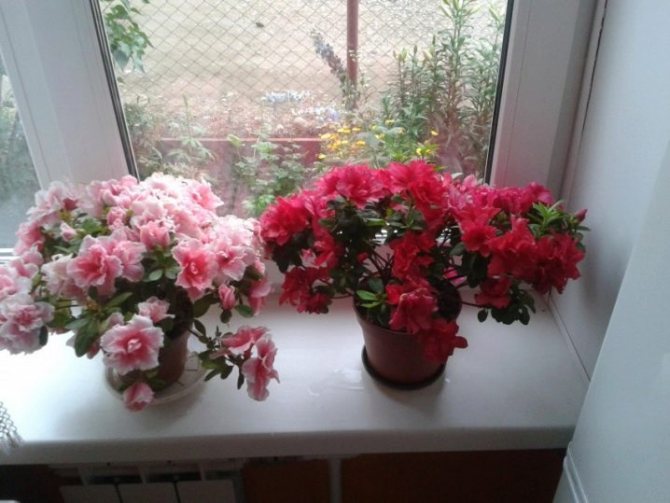

In the next 3-4 days, do not water the flower. The soil is simply moistened by spraying from a spray bottle. Both when watering and when moistening, melt, rain, settled or filtered water is used.
Acclimatization lasts up to two months. To make the plant feel better and help the plant get used to life in a new pot as soon as possible, experienced flower growers water it with water. with the addition of "Zircon"... Add 4 drops of this solution purchased in the store to 1 liter and water the plant with it, alternating with watering with filtered or settled water.
With the help of "Zircon" they have a stimulating, strengthening and depressing effect for pathogens. It protects the plant from powdery mildew, root rot, late blight, bacteriosis.
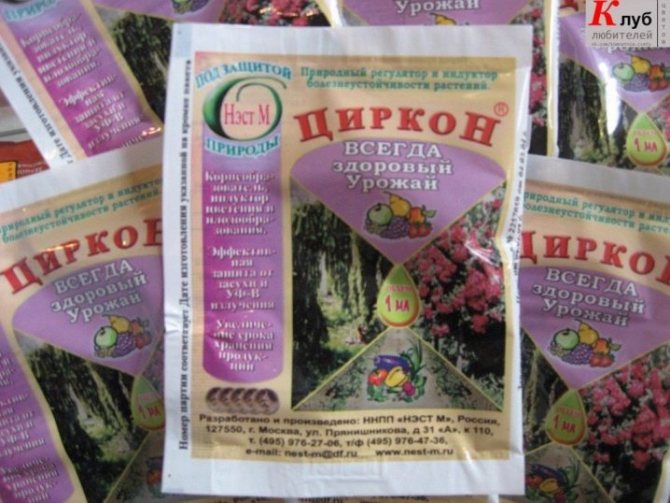

Carefully monitor the condition of the azalea. If it was transplanted correctly, the kidneys sleeping on the trunk will hatch on it.
Azalea is a beautiful but moody shrub. Beginners in floriculture rarely buy a beauty, preferring less whimsical plants, but in vain.
With proper care and strict observance of the points from the step-by-step instructions, it will take root and will delight the household with its extraordinary flowering.
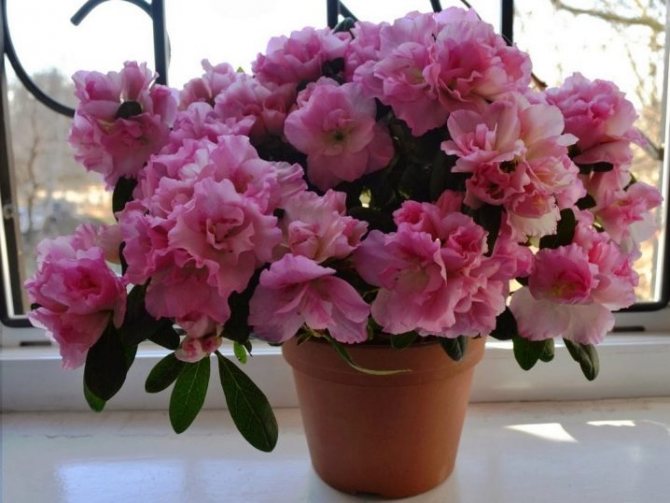

For a video on how to transplant an azalea at home, see below.
What to do if leaves fall
Subject to the basic rules, azalea can behave contrary to forecasts and expectations. Then flower growers begin to wonder what this might be due to. There can be several reasons for the leaves to fall. The solution to the problem depends on the accompanying symptoms:
- Brown spots, dropping and drying of buds are a sign of waterlogging of the soil and possible rotting of the roots.
- Dropping all the green mass indicates a lack of soil, space in the pot.
- Yellowing and loss of green mass indicates a lack of nutrients, possible drafts, and a sharp change in climatic conditions.
- The tips of the leaf plates turn brown and begin to crumble due to a violation of the rules of care. Perhaps the flower was first dried, and then abundantly watered. In addition, increased water hardness can cause this phenomenon.
- Drying and falling of leaf plates is evidence of excessive dryness of the air.
Despite the accompanying symptoms, the main reason for dropping foliage is a violation of the irrigation technique. At the first stage of combating this phenomenon, the irrigation scheme should be adjusted:
- dry the roots with excessive watering;
- in case of drought, water the soil with several portions of warm water;
- change the water to rain or melt.
One way is an emergency transplant. Before using this method, you should analyze the errors and fix them.
How to propagate an azalea by cuttings
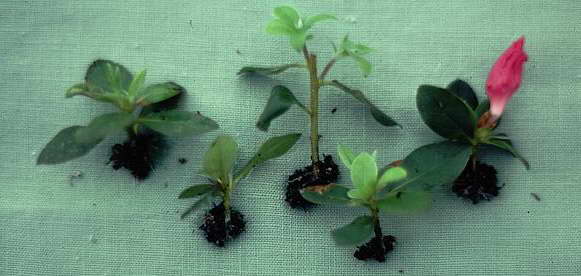

Azalea cuttings photo
Propagation of azaleas by cuttings is the simplest and most successful way.
- In March-June, the apical semi-lignified cuttings 5-8 cm long are cut and rooted in coniferous soil, having previously treated the cut of the cutting with a growth stimulator, it is necessary to plant it to a depth of 1-2.5 cm.
- Build a greenhouse using a glass jar, be sure to ventilate, irrigate, water, keep a temperature of 25 ° C.
- When new shoots appear, it will become clear: rooting was successful. Continue watering and irrigation, do not forget about acidified water. After a couple of months, the plants can be opened and accustomed to the conditions of the apartment.
With due attention, almost all seedlings are accepted.
How to cut an azalea, the video will tell:
Buying azaleas
Azalea, which you can buy at one of the flower shops, is susceptible to temperature changes. If the purchase is made in the winter, then they bring it home, having previously protected it from the outside cold.
Where can one buy
Rhododendrons adorn the counters of flower shops. Experienced florists advise buying flower crops where they are grown by botanists.
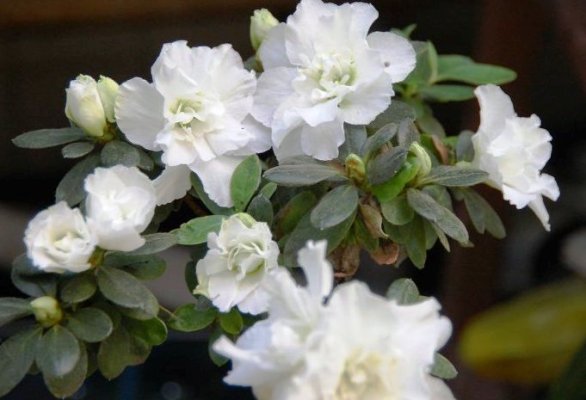

How to choose
Acquisition begins with the selection of a variety, then pay attention to the condition and external characteristics. Selection rules when going to the store:
- There should be no spots, dried parts on the stems and leaves.
- When examining, you should pay attention to the inner sides of the sheet plates, it is there that pests or their masonry can be located.
- Florists recommend taking on the appearance immediately after flowering.
- The soil should not be too moist or too dry.
- When choosing, exclude plants in which leaf fall is observed.
What colors are suitable for
Azalea soil is suitable for crops that prefer acidic environments. Such plants include:
- anthurium,
- gerbera,
- geranium,
- hydrangea,
- philodendron,
- platizerium,
- cyclamen.
Also, an acidic substrate is suitable for violets, the main thing is to control the acidity indicators in the range of 5.5-6.5 pH.
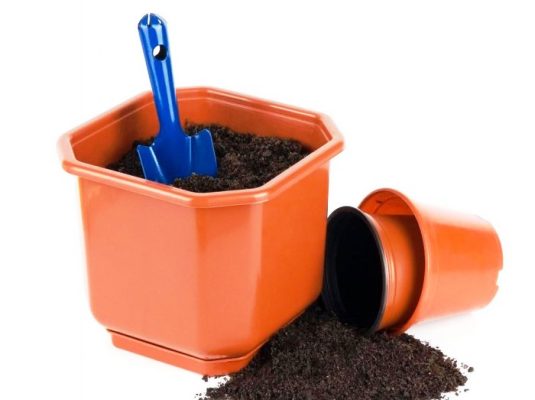

Errors that are usually made when preparing the soil, how to fix them
Many growers make a lot of mistakes when compiling soil at home.
Excessively heavy soil. In such soil, the plant simply cannot survive, since the root system will not be able to absorb trace elements and vitamins. If it is noticed that the azalea is not growing, transplantation into loose, breathable soil is required.
The soil has a weak acidity. At low pH levels, the life of symbiont microorganisms is impossible, and thanks to them, the plant receives all the necessary nutrients.
There is only one way out to add pine bark, needles of conifers, leaf humus to the soil as soon as possible.
High peat content. An excess of low-lying peat will lead to the structure of the soil being heavy and moisture-consuming. When water stagnates in the soil, the root system will rot. It is recommended to transfer the plant to good soil.
If the soil is selected correctly, then there is no doubt that the plant will be fragrant and delight with flowering. Indeed, in a suitable soil in the plant itself, the necessary metabolic processes will take place, azaleas will have enough nutrition and moisture. If the soil is not properly selected, the azalea will not grow.
Which land does the flower love and which one does not?
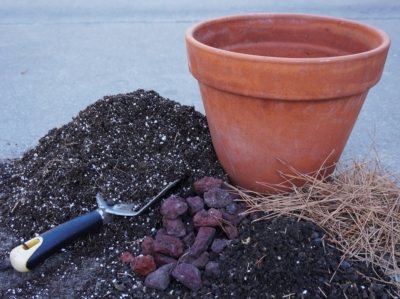

In order for the azalea to feel comfortable, the soil must have moisture and water permeability, be light and rather loose, containing the necessary acidity, a large amount of humus and nutrients, and retain moisture well.
Neutral soil is categorically not suitable for planting, this is justified by the fact that the acids and alkalis contained in it are completely balanced and lead to neutralization of each other. It is highly not recommended to use crushed limestone as drainage, as it alkalizes the soil, making it less acidic.
Reference. Do not add ash to the soil and use fertilizers containing chlorine and lime.
Photo
Here you can see what the transplanted flower looks like.
How to care
In itself, full care begins immediately after it is placed in a new habitat. You need to understand that azalea is not only capricious, but at the same time a persistent plant. If it is properly planted in a pot and the necessary climatic conditions are created, in the reviews, gardeners talk about half the case.
Key lighting requirements
As already mentioned, the home flower azalea loves bright, but not direct sunlight
... For this reason, she needs to find just such a place. If there is dry and warm weather outside - at this time it can be taken out onto the balcony, but at the same time provide a small shade so that it does not dry out.
Temperature features
Homemade azaleas are very demanding on a stable temperature regime, so heat and stuffiness are considered to be its main enemies.
It is worth remembering that the formation of buds for further flowering begins at a temperature of 6-10 ° C. It is necessary to provide such a temperature regime from October to December.
After the buds begin to bloom, the temperature should be raised to 17 degrees Celsius. In the case when at the beginning of flowering the temperature for some reason, on the contrary, decreases, in the reviews, amateurs say that the azalea will be able to bloom a little longer.
Key rules for high-quality safe watering
Surely everyone who has this flower does not want to care for a sick azalea. For this reason, it is necessary to regularly inspect the soil for the presence of the necessary moisture in the pot.
In no case should a dry coma occur.
However, do not forget that it is not recommended to pour over. For this reason, all the water that has reached the sump must be drained.
The water itself deserves special attention. Before watering a flower with it, it is necessary to let it stand for at least 2 days, and also be sure to boil it.
During the flowering period, it is allowed to water the azalea with tap water without preliminary boiling and settling.
Selection of the necessary soil
Azalea is a plant that loves acidic soil. It is simply impossible to create such a substrate at home, so it is better to contact a flower shop and buy. This is considered the best option to minimize the risks of various bacteria entering the ground.
Is fertilization necessary?
Azalea it is recommended to feed with mineral fertilizers and only profile
... It is highly undesirable to use a prepared solution with your own hands, since this will have an extremely negative effect on flowering: possible yellowing, damage to the roots.
Reproduction
This plant can reproduce in such ways as:
- seed;
- cuttings;
- or by dividing the bush and grafting.
It is worth noting that the seed method of reproduction is used exclusively by professionals who are trying to develop a new variety.
If we talk about propagation by cuttings, then it is very popular at home. Reproduction is carried out by half-woody stem cuttings. This is due to the fact that a fresh green stalk is prone to rapid disappearance, while a woody one, despite a long period of growth, still takes root.
You can start cutting cuttings from the middle of winter, but to achieve the best effect, it is still recommended to carry out these manipulations in the spring, preferably in March.
To achieve fast and high-quality rooting, it is best to use substrates such as sphagnum peat or coniferous soil.It should be remembered that only cut cuttings must be treated with special rooting stimulants (they can be purchased at any flower shop). When planting, they are deepened into the ground to a depth of 1-2.5 centimeters. After planting, it is imperative to cover the stalk with a glass jar or plastic wrap. Do not forget about regular watering and spraying.
For the growth of cuttings, the ideal temperature is considered to be about 25 degrees Celsius, while the rooting itself takes place over 3-5 weeks.
If we talked about reproduction by the method of dividing the bush, then there is a small nuance: this method can be resorted to if the plant is at least 3-4 years old. Due to the fact that the root system of the azalea is very thin, it must be divided with extreme care so as not to harm it and not kill the plant.
Growing azaleas from seeds
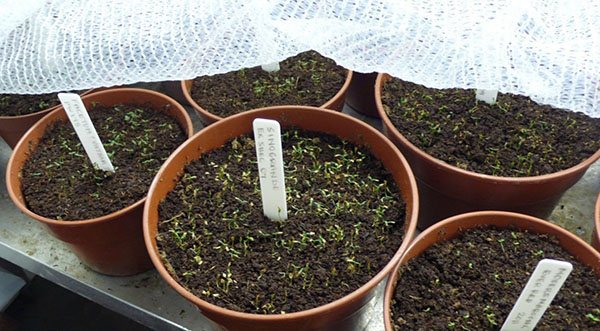

Getting blooming azaleas from seeds is extremely difficult and troublesome, but possible. For this, small seeds are mixed with dry sand and sown on the surface of the substrate. The best time for the procedure is spring.
Future plants spend three weeks under the film at a temperature of 18-22 ° C and a constant humidity in the range of 90-100%. They are regularly sprayed and ventilated to prevent drying out or mold. When true leaves are formed on the seedlings, it is time for azaleas to dive. And the seedlings that have reached a size of 10–12 cm are transplanted into their own pots.
We transplant the azalea correctly - video
The magnificent azalea captivates at first sight. As a true beauty, whims are inherent in her, taken by conquered flower growers, because the effort spent on care is rewarded with the onset of a period of lush, beautiful azalea bloom.
As you make efforts, be busy, remember the future joyful reward. The flower is also called the alpine rose: indeed, the proud beauty resembles the queen of flowers, sometimes surpassing her in her perfection.
Azalea diseases
Knowing how to care for azalea at home, you can avoid most of the diseases of this plant. They all come from a lack of moisture or excess light, from watering with hard water, or from an imbalance between humidity and temperature. With poor watering, a spider mite can start, which will have to be fought with special means.
AZALIA ROOM. GROWING, CARE AND DISEASES
Azalea is an evergreen plant that can rightfully be called the most striking decoration of a home flower garden. This plant was brought to the continent from England in the 19th century, but it was far from immediately possible to take root in the new conditions. Only thanks to many years of painstaking work of breeders, we got the opportunity to grow this capricious, but very beautiful flower in our homes. Caring for an azalea in winter is difficult, but the result will be great flowering when other indoor plants require complete rest.
Azalea is a plant included in the genus Rhododendron, it is a direct relative of the heather shrub. Outwardly it is?
- A small shrub with many side branches and small leaves, flowers can be simple and double.
- The color of the buds can be very diverse: these are all shades of pink, azalea can also bloom with white, purple or red buds, and there are both early and late flowering varieties.
Azalea remains a favorite plant in many countries. In the east, a bonsai is often formed from such a shrub, which becomes a symbol of prosperity, covered with bright and very beautiful petals.
Azalea is often presented as a gift to lovers of indoor flowers during flowering, and after a few days it completely dries up and dies. This is due to the fact that the conditions of an ordinary city apartment are completely unsuitable for such a flower, and the azalea quickly dies on the windowsill.
In order for this beautiful flower to decorate your home, it will have to create special conditions.
Azalea needs constant care, so you will have to devote enough time to the flower. If you do not have the opportunity to seriously engage in floriculture, it is better to choose less whimsical plants for decorating your home.
Forum of florists: reviews, advice
Among novice and experienced florists, it is customary to share opinions and photos of purchased flowers. This helps to find solutions to many problems and avoid repeating mistakes. Rhododendrons, according to gardeners, are quite capricious when it comes to watering. To build a system of "relationship" with a flower, you need to fully adapt.
One way to determine if a plant needs watering, as advised by experienced Azalea experts, is to roughly weigh the pot. If the pot is light, then the azaleas need watering. If the pot is heavy, it means that the soil is damp, no watering is required.
When purchasing a dry bush or partially dying off parts of a plant, growers are advised to determine the viability of the cuts made. If on the cut the inner part has acquired a black color, then it is impossible to reanimate the azalea. If there are green streaks on the cut, then the plant must be urgently transplanted. You should also create greenhouse conditions for several days after transplanting, covering the container with plastic wrap. For the prevention of diseases, the flower is recommended to be systematically treated with the drug "Fitosporin M".
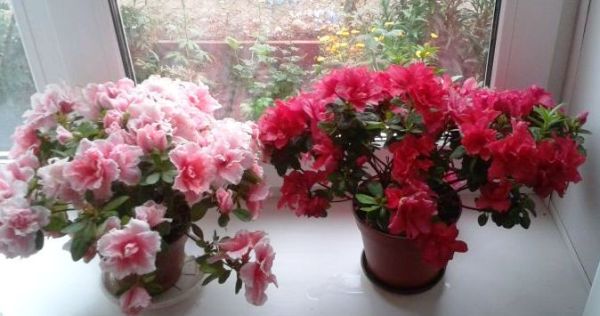

For many varieties, according to collectors, the pallet method becomes the best watering option. For home cultivation, varieties of the Japanese type are suitable. Collectors recommend rooting cuttings at the slightest suspicion of rotting of the root system or obvious shedding of leaves. This allows you to preserve the variety with all species characteristics, and also allows for the reproduction of the species.
Pinching a young plant
The grown cuttings (more than three centimeters) must be dived into separate containers. A coniferous substrate is ideal for planting. Transferring to another container takes place at the beginning of December. The apical part of the young culture must be pinched to produce new shoots. Pinching can also create a branching bush shape.
The first formed buds must be removed. The plant will spend all its energy to grow the green aboveground part of the azalea.
The subsequent pinching should be done in March. You will need to cut about six branches.
In the spring, you can move the azalea to a larger container (about ten centimeters in diameter). A drainage layer should be laid out at the bottom of the container. The container should be filled with a mixture of coniferous soil and peat.
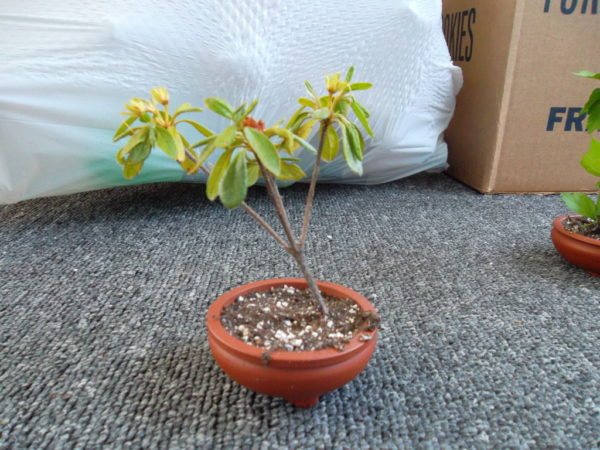

To create a compact shape, the small azalea must be pinched.
After transplanting, the azalea must be regularly watered with settled warm water. Indoor azalea can be grown by cuttings in three years.
Reproduction will not only help you breed the flower yourself. The grown azalea is more adaptable to the environmental conditions of the home environment.
Ready soil or DIY soil - which is better?
Azaleas are well suited not only ready-made soil, but also self-made. It is advisable for novice gardeners to use ready-made soil so that the soil contains the exact proportions of all the necessary substances.
Important! The choice of ready-made mixtures should be approached responsibly, since there are a very large number of manufacturers who produce various soil for plants. Their quality and price vary greatly.
It is also necessary to remember that the soil purchased in the store cannot be stored for a long time. Its shelf life is limited to two years due to reduced nutritional properties.
For people with experience in mixing, self-priming is the best option.This is argued by the fact that you yourself control the preparation and composition of the mixture, the environmental friendliness and quality of its components.
Differences for indoor and outdoor plants
Naturally, there are some differences in transplanting a garden variety and a room one, they also grow in different conditions.
- When a garden Azalea seedling is taken out of a purchased container, in no case should the soil be shaken off from the roots, and in the case of a room Azalea, part of the old soil is removed.
- After planting an outdoor Azalea, it is necessary to make a near-stem circle, when planting a home plant, the ground is even on top.
- For a garden Azalea, a layer of mulch on top of pine needles or chips is required; with room maintenance, this is not necessary.
Can you plant when flowering?
It is not recommended to disturb the azalea during flowering. When stressed, she can lose buds and even shed leaves. However, there are exceptions to every rule.
A transplant is needed in the following circumstances:
- after the purchase;
- if the azalea is flooded;
- with insufficient pot size.
Caution! Transplanting during flowering is carried out by the transshipment method, without affecting the roots. Dividing the bush for planting during this period cannot be carried out.
Bloom
The plant does not like when it is rearranged from place to place, therefore it is better not to move or twist the pot with it once again. For an abundant flowering of azaleas, you need to regularly prune and pinch the shoots. The last time they do this is in May, because the laying of flower buds begins in June. A very lush bush will not bloom well. 4-5 leaves are left on the stem, young shoots near flower buds are also pinched.
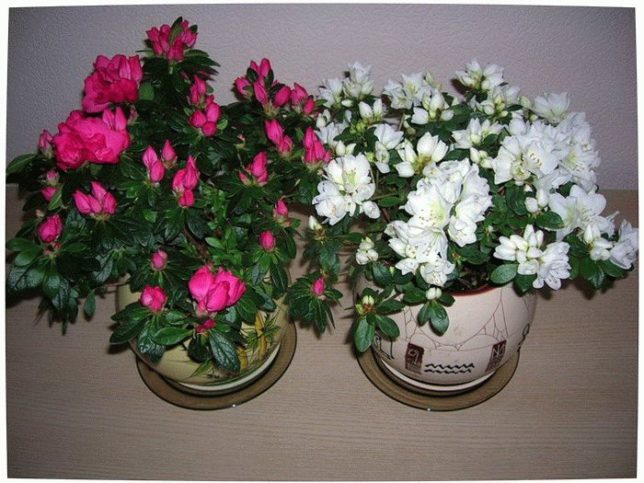

What does indoor azalea look like: photo Dried and faded buds must be removed. After pinching, the flower is treated with a weak solution of potassium permanganate. The plant needs a cool content for vigorous flowering. With careful care, azalea flowers grow in size and quantity every time. The flowering period depends on the variety.
Care errors
Many gardeners, especially amateurs, make many mistakes that can threaten the extinction of the azalea. The main mistakes in leaving are considered to be:
- constant rotation of the pot;
- lack of necessary watering;
- watering with cold water;
- attempts to create mineral fertilizer on their own;
- improper manipulations during plant transplantation;
- keeping in a warm room with a temperature of 20 or more degrees Celsius.
You should always remember about these common mistakes so that you never make them, and then the azalea flower will delight the eye for a long period.
Possible difficulties
Often, even the most experienced growers, who have gotten their hands on the cultivation of azaleas, are faced with the occurrence of such troubles as diseases and plant pests. Azalea can get sick due to adverse environmental influences, so it is doubly important to observe proper conditions for caring for the plant.
You can determine that a flower is sick by the following signs:
- Azalea leaves unexpectedly turn yellow and fall off, which is most often the reason for insufficient light and moisture. In this case, you should more carefully monitor the watering and location of the plant, and then the problem will be eliminated;
- fusarium and powdery mildew - the main enemies of the azalea, as a result of which its rapid death occurs. A measure of the fight against ailments is the creation of an optimal temperature regime for the existence of a flower, as well as urgent pruning of diseased leaves;
- by such signs as the rapid wilting and falling of flowers, it can be determined that watering the plant is carried out with unsuitable water for it... The disappearance of the problem will be facilitated by preliminary boiling of water with the addition of fertilizers to it;
- decay of rhizome - one of the most common problems arising from the accumulation of excess moisture.To prevent the disease, it is necessary to periodically drain the accumulated water from the sump.
Azalea pests cause no less trouble for flower growers, since they significantly spoil the appearance of the plant. The fight against them occurs only by chemical treatment of the bush. To begin with, the flower is washed with a disinfectant solution, then the liquid is necessarily washed off with water and only after that they start spraying with the purchased product.
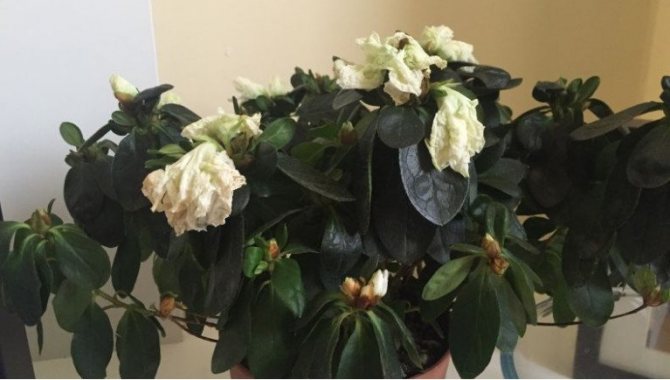

Due to its incredibly spectacular appearance, indoor azalea can leave few people indifferent, however, when buying such a capricious plant, it should be borne in mind that it will not be easy to care for a flower. With proper care, azalea can surprise you with its incredibly lush bloom, which will serve as an excellent reward for the work done. The most important thing is to comply with some of the features and requirements of the flower, and then the result will definitely not disappoint you.
Azalea: types
Azalea is a very beautiful plant and comes in many different varieties. They are divided into early flowering, medium flowering and late flowering. The most popular varieties of rhododendron are listed below.
Early flowering (December-January)
Early flowering plant varieties begin to form their buds and bloom from December to January.
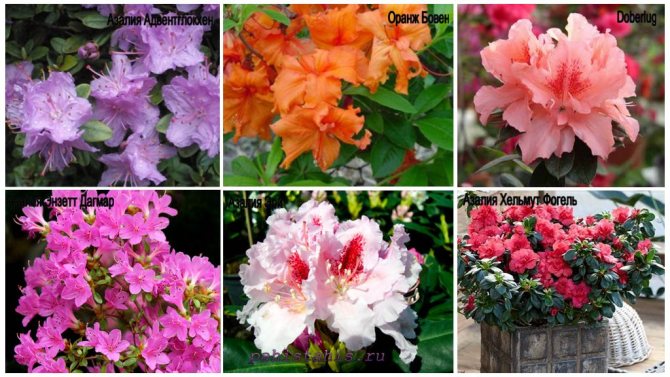

Azalea species
These types include:
- Azalea Adventglokhen (Rhododendron ramapo). The plant has bell-shaped flowers, which are about 6 cm in diameter. They are slightly terry at the edges. There are non-double, crimson-red color.
- Dresden 1936 (Dresden). Azalea with medium doubleness and shiny flowers, up to 6 cm in diameter, salmon pink.
- Doberlug. The plant has dark pink double flowers, framed by a white border with a diameter of 7.5 cm.
- Orange Boven (Rhododendron Orange Boven). Rhododendron with orange-red semi-double flowers from 5 to 6.5 cm in diameter.
- Enzett Dagmar (Rhododendron Enzett Dagmar). Azalea with brilliant pink flowers, 7 cm in diameter.
- Eri (Rhododendron Eri). The plant has semi-double carmine-pink flowers with a diameter of 7 cm and with a white border.
- Helmut Vogel (Rhododendron Hellmut Vogel). The earliest variety. With red-purple double flowers, 6 cm in diameter.
- Weisse Sheme (Rhododendron vaseyi). Azalea of this variety has double white-pink flowers with a wide-funnel-shaped shape, their diameter is about 6 cm.
Medium blooming (January - March)
Medium-flowering azalea varieties bloom a little later and delight with their flowering from January to March.


Azalea varieties
Popular varieties in this category include the following plants:
- Albert-Elizabeth (Rhododendron Albert-Elizabeth). A plant with terry pale pink or white flowers, with a bright red border on the petals, 8.5 cm in diameter.
- Apollo (Rhododendron Apollo PA). Rhododendron with loose or non-double flowers up to 7 cm in diameter. There is a brick red pattern at the base of the flower. The petals are wavy at the edges.
- Leopold Astrid (Rhododendron Astrid). Azalea with light pink double flowers slightly corrugated along the edges and a red border, up to 7 cm in diameter.
- Knut Erwen. The plant has intense red double flowers, 6-6.5 cm in diameter.
- Max Sheme. The variety is distinguished by double flowers of bright salmon color with a white border. The flowers are irregular in shape and strongly corrugated at the edges. Flower diameter 6.5 cm.
- Florida (Rhododendron Florida). A plant with non-double and intense red flowers with a diameter of 5.5-6 cm.
Late flowering (February - April)
Plants of this group are late flowering plants. They bloom from February to April.
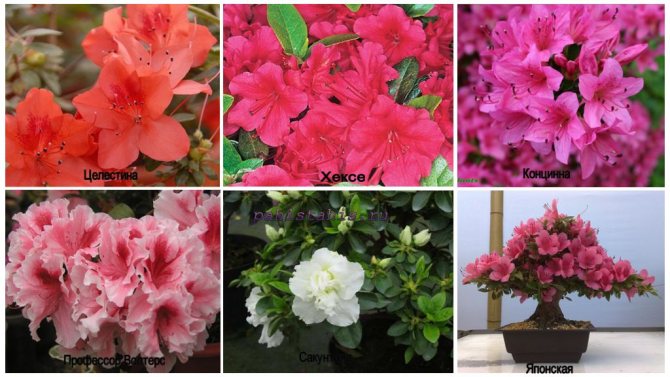

Late flowering azaleas
The most popular types in this category are:
- Celestina (Rhododendron Coelestina). Plant with non-double flowers, bright carmine color, 6 cm in diameter.
- Hexe (Rhododendron Hexe). Azalea with double flowers of a wine-red hue, 5.5 cm in diameter.
- Concinna (Rhododendron Concinna). Rhododendron is distinguished by non-double flowers, wide-funnel-shaped petals, light lilac and raspberry-lilac shades of flowers, 7 cm in diameter.
- Professor Wolters Indian Azalea. Variety with non-double, bright light salmon shade, funnel-shaped flowers, with a white edge and red dots on the top 3 petals, 7.5 cm in diameter.
- Sakuntala (Rhododendron Sakuntala).The species is distinguished by double white flowers and green specks in the throat, 7 cm in diameter.
- Japanese azalea (Rhododendron obtusum). The most common indoor type. After flowering, it can grow outdoors. It is a low shrub with small shiny leaves 3 to 5 cm long. It blooms profusely with 3 cm funnel-shaped flowers of various colors. In Japan it has the status of a plant of national importance at the level of Sakura and is one of the main elements of the Japanese garden.
- Azalea indica (Azalea indica). Small, up to 50 cm tall shrub with small leaves. Young shoots are covered with chestnut-brown or bright red bristly flat hairs. Flowers collected in inflorescences can be either double or non-double. They have a wide-funnel-shaped shape with a diameter of up to 3.5 cm and open at the same time. The flowers of the Indian azalea can be from white to bright red, and not rarely and 2 colored and even speckled.
- Azalea white (Rhododendron simsii). An ornamental, flowering shrub that resembles jasmine in its appearance. Grows up to 60 cm tall. Flowers can be double or non-double, white or pinkish. This variety should not be planted next to azaleas of a different color, as the white azalea can pollinate and change color instantly.
Acidity


Consider what soil pH is suitable for rhododendrons and how you can acidify the soil. pH should be at the level of 3.5-5.5 and not go beyond these limits, if it is increased, then it is necessary to raise the level of soil acidity. High-moor peat, rotted coniferous litter, as well as sawdust, leaf compost, fresh manure, and sphagnum moss are well suited for this.
Heavy clay soils are acidified with the minerals listed below:
- Colloidal sulfur. It is used for a significant change in acidity: the introduction of 1 kg of granular substance per 10 m2 lowers the pH by 2.5. It is advisable to apply before winter, to a depth of 10-15 centimeters. The result appears in 8-12 months.
- Ferrous sulfate. Used to reduce acid levels quickly and gently. When applying 0.5 kg of powder per 10 m2, the pH decreases by 1. The result comes in a month.
- For light acidification of the substrate, ammonium nitrate is used in the spring, ammonium sulfate for the autumn digging, and potassium sulfate in the fall.
A quick result is provided by acid solutions:
- Citric acid solution. Preparation: A couple of teaspoons of citric acid are mixed with a bucket of water.
- A solution of sulfuric acid or unused electrolyte. Preparation: 50 ml of electrolyte is diluted in 10 liters of water, the volume of the solution is used per 1m2 of the sown area.
- A solution of 9% vinegar. Preparation: Mix in a ratio of 100 ml to 10 liters of water. This option is the worst because it gives a short-term effect and destroys the soil microflora.
Optimal conditions for keeping azaleas in winter
Gorgeous delicate azalea requires a special temperature regime. In our apartments it is usually too hot for her, the optimum temperature is + 10-15 degrees. The maximum temperature is +18, if it is warmer, the plant will quickly begin to dry out.
To make the azalea feel comfortable in the room, you can use a few simple tricks:
- The pot in the room can be overlaid with ice cubes. This is the easiest way to lower the temperature for the plant, and it will feel much better. It is important not to overdo it, so as not to damage the roots with cold.
- The plant needs to be watered frequently and regularly sprayed with cool water. It can be just at room temperature, it is advisable to use distilled water. Maintaining the desired humidity will prevent the leaves from drying out.
- Azalea will feel good on a loggia and even on an open balcony, if the temperature does not drop below +5 degrees.Flowers will form from October to the very beginning of winter, at which time the plant needs cool weather and humid air. The optimum temperature during this period is + 16-17 degrees.
- It is best to place the plant on the north or east side of the house. It does not tolerate direct sunlight, so partial shade and a shaded area will be the best placement option.
- It is important to maintain a constant watering regime: the soil should be moist at all times, but not too wet. If, for some reason, the earthen lump is completely dry, the pot must be placed in a container of water for several hours, and after three days it will be possible to return to the usual watering regime.
The plant is watered at least 2 times a day, and the higher the temperature in the room, the more abundant the watering should be. In addition, you will have to regularly spray the azalea with water at room temperature. It is undesirable to use tap water: at least you need to let it settle, which will take at least a day.
One of the prerequisites for a beautiful long flowering is the correct feeding in accordance with the regime:
- Once every two weeks, you can use the mineral fertilizer "Superphosphate": the dosage is about 15 grams per 15 liters of liquid.
- In a flower shop you can buy complex fertilizer "Azalea": this is a ready-made kit containing a full set of nutrients and special microelements.
- When the buds begin to form, you can speed up the flowering process and make it more lush: for this you need to purchase the Uniflor-Bud complex fertilizer. It contains potassium and phosphorus, which azaleas need during the flowering period.
- When the azalea has faded and the growing season begins, the azalea will need a lot of nitrogen to build up green mass. During this period, you can use a special fertilizer "Uniflor-micro". It is necessary to read the instructions and strictly dose the drug: an overdose will not only not give a positive result, but can also cause serious harm to the root system.
- There is one more important top dressing - "Iron chelate" (another name - "ferovit"). It allows you to provide the leaves with a sufficient amount of iron if the plant begins to turn yellow. It is also important to follow the instructions strictly to prevent excess amounts of trace elements from entering the soil.
When purchasing an azalea, you should opt for a plant with a large number of buds, which will have only a few flowers in full bloom. It is such a shrub that will delight you with flowering for a long time, and the petals, when the right conditions are created, will not begin to crumble.
An important rule of thumb: the warmer the room, the shorter the flowering period will be.
So if the greenhouse room is only 12 degrees, each azalea bush will be able to delight you with flowers for several months, and if the temperature is higher, then this period will be reduced to two to three weeks.
There are several secrets of flower growers that allow you to get abundant and long-lasting flowering:
- Correctly selected soil composition. This is peat, heather and coniferous soil, the substrate should be as light and permeable as possible. Such a soil mixture dries out very quickly, so you will need to constantly monitor it.
- Azalea prefers slightly acidified soils. To have a lot of flowers, it is enough to add just a drop of citric acid to the water for irrigation once a month. This will maintain an optimal balance in the ground.
- It is advisable to transplant the flower as rarely as possible. Each transplant is a very serious stress for the plant, therefore young azaleas (up to 3 years old) are transplanted no more than once a year, and older ones - only once every two years. Indications for transplanting may be an overgrown root system or decaying roots.Even after the purchase, you need to keep the plant in the same soil as long as possible, and for transplanting you need to pick up a special soil designed specifically for rhododendrons.
- You cannot loosen the soil. Azalea has very thin delicate roots that are quickly damaged when mixing the soil. Specially selected lightweight soils provide a sufficient flow of oxygen to the roots, so additional loosening can be dispensed with.
In order for the bush to bloom longer, the faded buds must be removed immediately, in addition, the seed pods must be removed. This will allow the plant to retain energy for new flowers.
The flowering period will also help prolong the timely pruning of the plant and pinching the shoots. The more lush the bush, the worse it will bloom, so it is important to pay attention to the correct formation of the crown. Shoot pruning is carried out starting in May. Buds are formed at the tops of the shoots, so you need to make sure that there are as many of these tops as possible.
An azalea can be turned into a small, beautiful tree, like a Japanese bonsai tree, or into a small shrub with lots of side branches.
To form a crown-tree, the largest branch is selected, other shoots are removed. When the branch reaches the desired size, the tip is pinched, and the lateral processes will begin to grow. In this case, the plant must be turned so that the crown forms evenly, and pinch the tops of the overgrown branches. To form a crown-bush, you need to pinch the branches at a distance of 12 cm from the root, and when lateral processes appear, turn the plant regularly. Then the shoots will stretch evenly, and the bush will look beautiful. With each pruning, all diseased and damaged shoots are removed.
Azalea will appreciate your concern: if you control the growth and formation of new shoots, as well as ensure compliance with the temperature regime, the plant will become a real decoration of the flower garden. From the side, the flowering bush is completely covered with buds, and you can't even see the leaves on it, which looks just wonderful.
Although azalea is a whimsical flower, it is quite possible to create acceptable conditions for it that will ensure constant magnificent flowering. It can be made a real decoration of a balcony or a greenhouse; it looks great in a home summer garden.
Azalea easily tolerates the coolness of the street, so the pots can be placed on open terraces in late summer and early autumn.
The main condition for fast growth and excellent flowering is the attention and care of the owner. This plant is sensitive to the attitude of the owner, and with proper care, it will constantly delight you with bright buds. The fragile northern beauty can become a regular in your garden, and you can experiment by growing plants with different petal colors.
More information about azalea care can be found in the video.
"And it flew around you?" - Asked me a colleague, who, like me, on March 8, was presented at work with a small bush of azaleas. “No, I’m still growing, only the flowers have wilted,” I replied. But what did she do wrong? Why was her azalea almost naked a week after the holiday, while everything was fine with me with the flower? Let's try to figure it out at home.
And by the way, this is a rhododendron
I was very surprised when I learned that this overseas beauty is a direct relative of our Far Eastern rhododendron, which adorns swampy valleys in the floodplains of taiga rivers with its gorgeous spring. Well, then it is clear - this plant is very fond of wet content. It can even be grown hydroponically. In general, azalea is one of the few indoor plants that prefer acidic soils. A mixture of coniferous soil with peat and sand (4: 2: 0.5) is suitable for her. Well, if you do not have the opportunity to go to the soil for this capriciousness, then you can do with a special soil for azaleas - this is sold in stores.
Store rules
Our shops sell azaleas from Denmark and Holland. Competent advice on how to care for azalea at home can only be given by a person who has practical experience in keeping these plants at home. They are sold in shipping soil, which is a mixture of high-moor peat with coconut fiber and has such valuable qualities for the seller as lightness and moisture content. But for the constant growth of a plant, it is not suitable. After purchase, you need to transplant the azalea into the soil recommended above. Azaleas are usually sold as 4 roots in one pot. You can divide these roots and plant each in a separate pot. It will not work to remove the transport soil from them - it was compressed too much and caught on the root of the plants. Therefore, you can separate them by simply cutting the contents of the pot crosswise into four parts.
Leaving immediately after planting
I will try to draw your attention to the most important points of how to care for an azalea at home. After planting in the recommended soil, the plant must be treated for prophylaxis with insecticidal and fungicidal preparations, allowed to dry, and then sprayed with the Epin biostimulator to reduce stress. If you have a greenhouse at home with a temperature not higher than + 20 ° C and a humidity of at least 80%, then this is an ideal place for an azalea. If there is no such place, then after the azalea leaves dry out, it is better to cover it with a plastic bag or put it in any other greenhouse. Flowers, of course, must be cut off. If there are unblown buds, and you want to save this plant, it is better to cut them off too. Now the main thing is to let the azaleas "recover" from stress and gradually accustom them to the climate of your home. How to care for azalea at home, then you will gradually decide for yourself, but for now, a week after planting, you can open the bag every day for two months, increasing the airing time more and more, so that the plant, firstly, is ventilated, and secondly, gradually hardened and got used to growing outside the greenhouse conditions.
"Then why aren't azaleas covered in stores?" - you ask. The fact is that plants are prepared for sale on farms in a special way. They are "fed" with a certain set of hormonal and mineral substances, allowing not only to bloom gorgeous, but also to maintain their appearance for several months, regardless of growing conditions.
When you transplant the azalea into home soil, you will drastically disrupt the plant's metabolism up to this point. In addition, gradually the reserves of all supporting substances will be exhausted, and the azalea, which is not used to growing without them, will die. By providing a greenhouse environment early on, you will mitigate the effects of stress.
North window plant
Azalea does not like the bright sun. it withers quickly in the heat, and the leaves burn and crumble. This plant will feel great on the north window. With regular feeding, it will bloom and grow. Azaleas need high humidity; when the air is dry, its leaves begin to crumble. Therefore, it is better to put a container filled with water next to the azalea, or put the plant pot over a tray of water. In the summer, during the heat, you can put ice around the soil around the azalea. Better, of course, to keep it in an air-conditioned room in the summer. Well, overdrying of the soil is unacceptable - it should always be a little wet.
Yes, I must say bluntly - this plant is not for novice flower growers. In order for it to delight you with its gorgeous flowering, you need to know the basic rules of how to care for plants of this species.
Azalea is very popular with many gardeners. Despite this, some do not even know how to care for an azalea in a pot so that it does not disappear? How can it be propagated? What are the requirements for the premises? Let's consider all these questions in more detail.
Care and reproduction
In this article, we will try to answer the questions that interest many flower growers:
- how azalea flowers multiply and how to care for them;
- how to plant and how to plant an azalea at home?
How to propagate at home?
Azalea can be propagated from spring to August in several ways: cuttings, seeds and dividing the bush. This is painstaking work that requires a fair amount of patience from the grower.
How does azalea reproduce at home?
Cuttings
The most reliable method is considered to be propagation of azaleas by cuttings, which gives up to 90% success.
How to propagate indoor azalea at home with cuttings? This procedure is carried out as follows:
- After a healthy plant has faded, cuttings about 10 cm long are cut from it - for this, they take the tops of half-year-old shoots. Cuttings are cut obliquely directly under the kidney.
- Three to four lower leaves are carefully removed, leaving the stalks of about 0.5 cm, and the remaining leaves are cut in half.
- For better rooting, the azalea stalk is immersed in slices in a solution of "Zircon", "Kornevin" or "Heteroauxin" and left in it for 5-6 hours.
- Next, a layer of drainage up to 3 cm thick is placed on the bottom of the bowl or box and sprinkled with a layer of sand 2 cm thick. Then the container is filled with a nutrient mixture with an acidic reaction.
Ready-made soil for azaleas or a mixture of equal shares of coniferous soil (rotted needles) and peat is best suited.
- Cuttings are planted in a substrate, deepening by 3 cm and maintaining a distance of 4 cm between them. After that, the soil is thoroughly shed.
- The container with the cuttings is covered with a film, thus creating a "mini-greenhouse", and placed in a light shaded place. Further, the cuttings are regularly sprayed and aired every morning, opening the film for 35-40 minutes.
Possible problems and ways to solve them
Falling leaves (not to be confused with deciduous azalea!), Lack of flowering, wilting are signals that the soil has been selected incorrectly. The reasons may be excessive peat content, lack of acidity or the heaviness of the earth. Transplantation is the only way to solve these problems. In the case of a lack of acidity, it must be increased.
Attention! Over time, the soil may settle. In this case, it must be filled up and mulched.
It must be remembered that soil is an important component for the life of an azalea. If the soil is selected correctly, then the plant will grow, bloom and cheer up with its beauty, so it is better to carefully approach its choice. With proper care and good conditions, azalea will no longer be a disposable plant.
Diseases and pests
Diseases:
Unfortunately, azalea is prone to many diseases of indoor flowers: powdery mildew, gray rot, rust, etc., but everything can be cured with appropriate drugs that are easy to buy at a flower shop.
Pests:
Greenhouse whitefly, with an accompanying soot fungus covering the leaves, viral infections that come with the pest; the mealybug leads to almost death. Moths, caterpillars - eat leaves; strawberry mite - leads to curling leaves, buds shrinking; flat red mite - coloring the leaves in a brown color, falling off.
Azalea is quite picky and troublesome to care for, but having mastered the nuances, providing favorable conditions, you will receive a plant of unique beauty, covered with outlandish flowers. With proper care, the plant will not undergo diseases, it will acquire a beautiful shape and will delight with magnificent flowering from year to year.
Pruning and shaping the crown of an azalea
Azalea pruning can be described as shortening last year's shoots, removing weak, close-growing branches in order to create a neat crown with an even distribution of flowers. For a beautiful crown, constant cutting and pinching is necessary.Remember, excessive branching of the bush can interfere with flowering.
To late varieties of azalea, the removal of excess shoots is carried out from the beginning of May, to early varieties in March. Pinching the tops, leave 4-5 leaves on them, cut off the shoots next to the flower buds too. At the end of summer, when the plant begins to lay flower buds, it must be properly pruned, if pruning is delayed, the buds will not form. At your discretion, the azalea can be decorated as a tree, bush or bonsai.
If you want the azalea to form a uniform crown without distortions, constantly rotate it around its axis.
How to form an azalea bonsai?
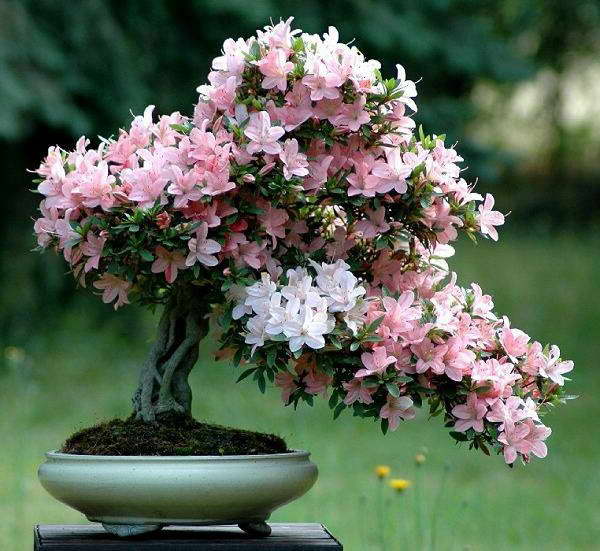

Azalea bonsai how to form a photo
- To form a bush, pinch the azalea at the cutting stage, leaving 10-12 cm in length, arrange the side shoots in the same way.
- To form a tree, first remove absolutely all shoots, with the exception of the central branch, growing it strong, even, use a support, regularly rotate the flower around its axis. When the desired size is reached, pinch the top, which will give rise to branching, constant turning of the flower, trimming the side shoots will help create a tree with a rounded crown shape.
- To form a bonsai, form the central shoot, then pinching - the side ones. To give the plant a curved shape with horizontal branches, tie small weights to the branches or tilt them with thick wire, wrap the shoots with it and bend it down as you wish.
How to transplant an azalea and divide a bush
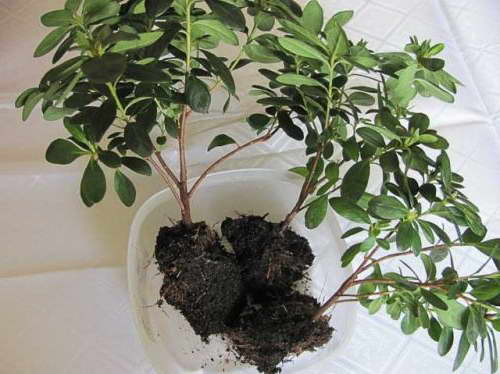

How to propagate an azalea by dividing a bush photo
Azalea bushes grow over time, they become cramped in the allotted pot. So it's time to start transplanting and dividing. Water the plant well and let sit for a few hours. After that, carefully remove the pot from the earthen clod and try, without damaging the roots, to divide the bush into separate parts. Azalea roots are superficial, rather fragile. We try to choose a wide, stable pot, in which the plant will have room to grow wider.

